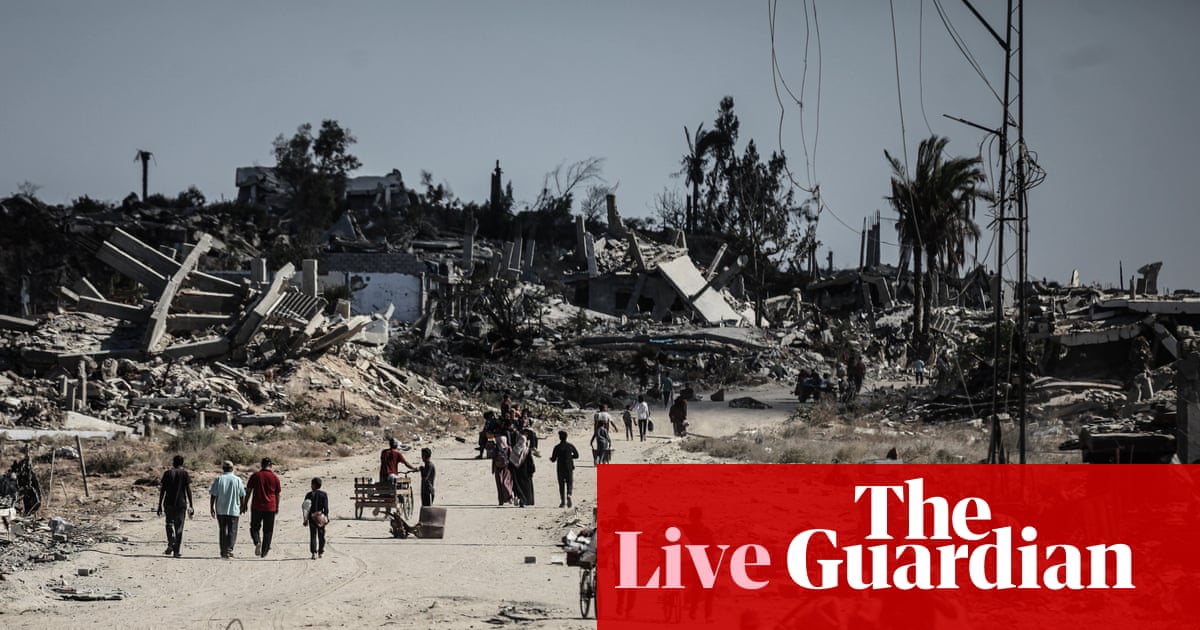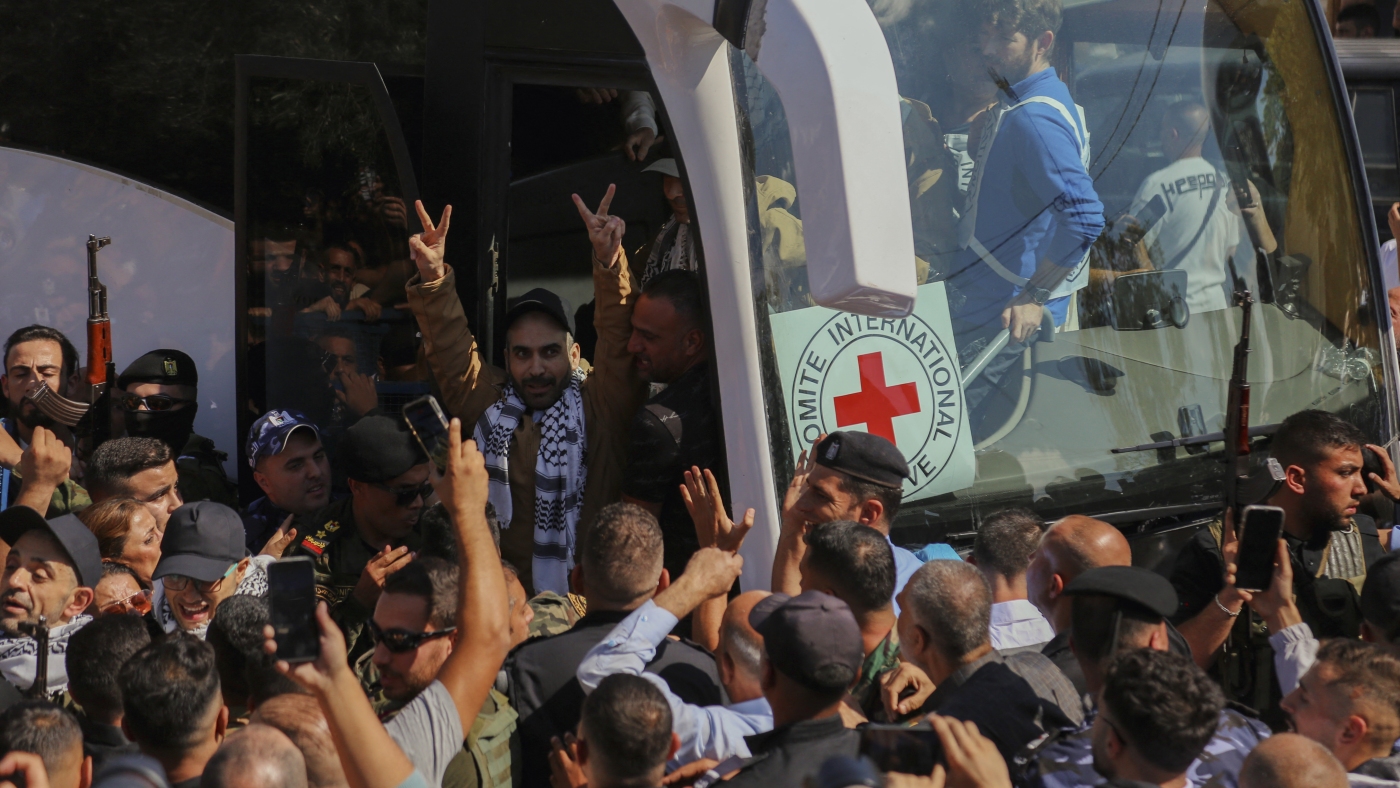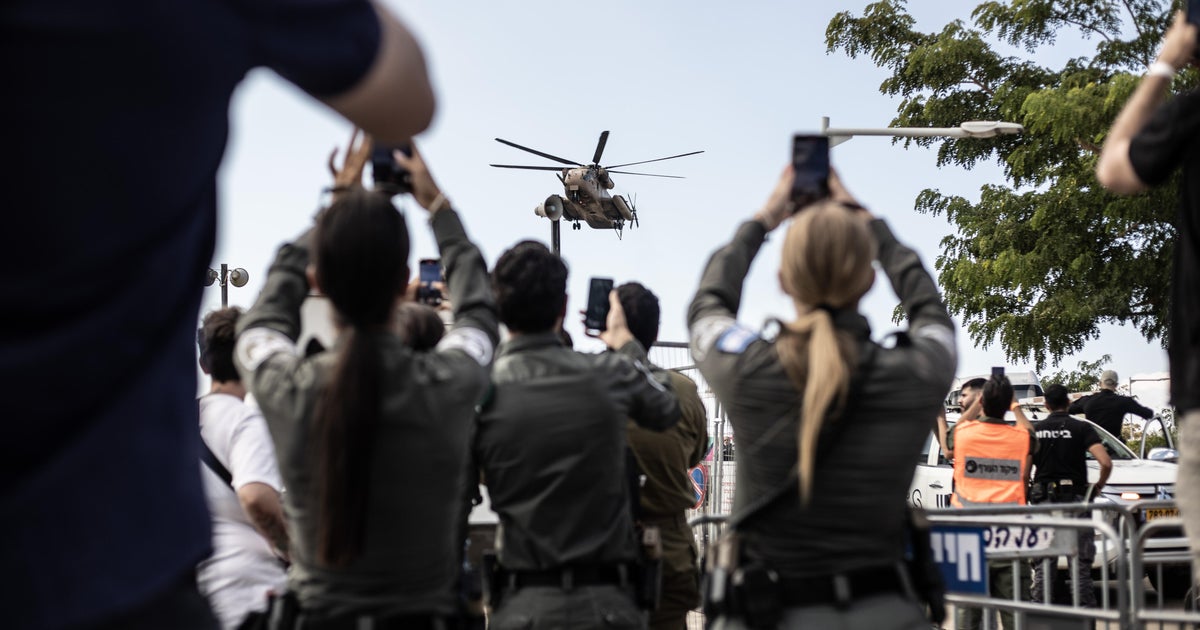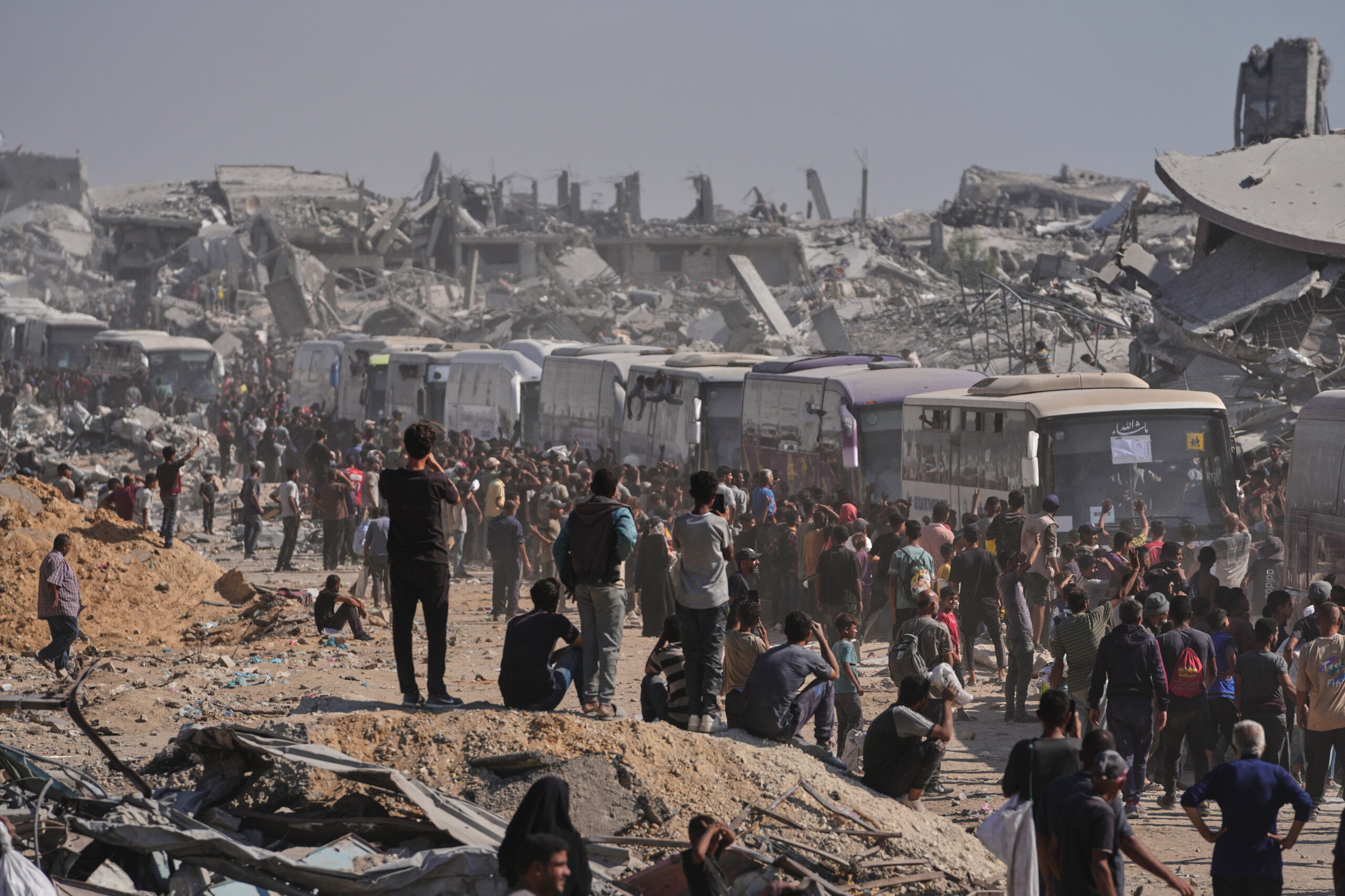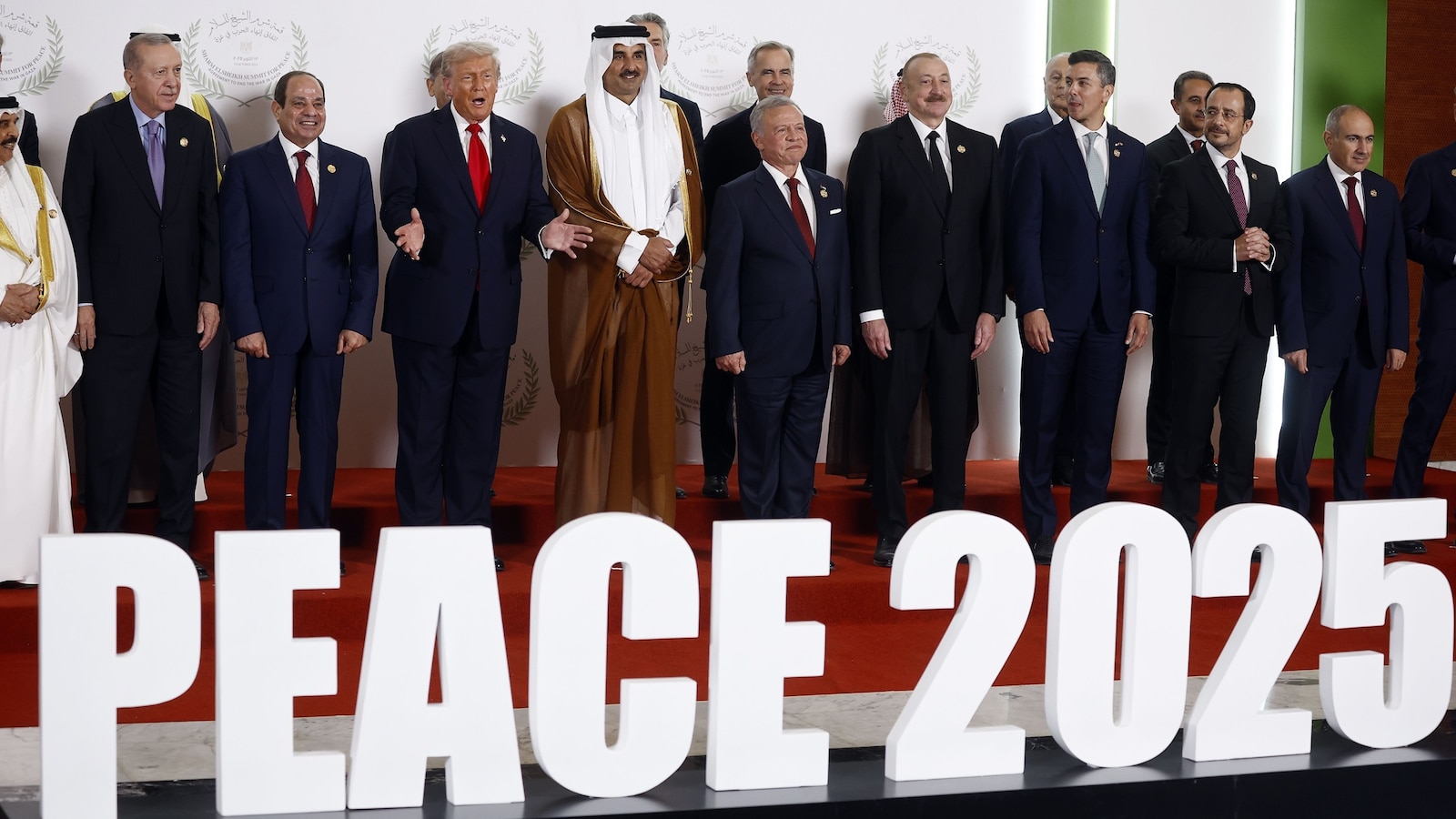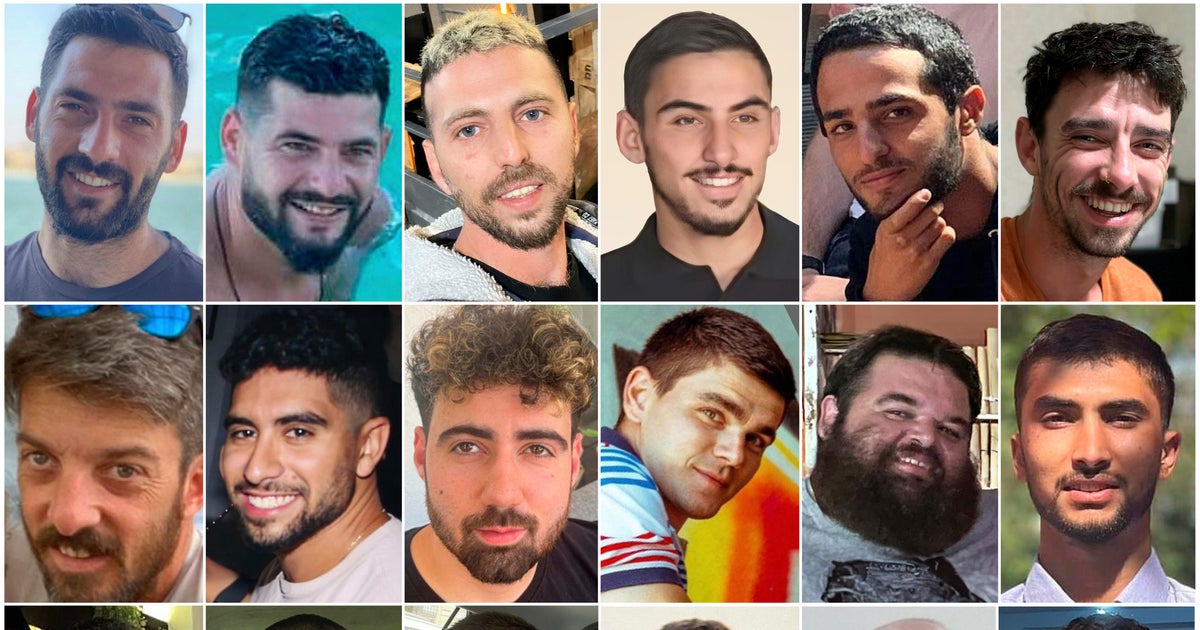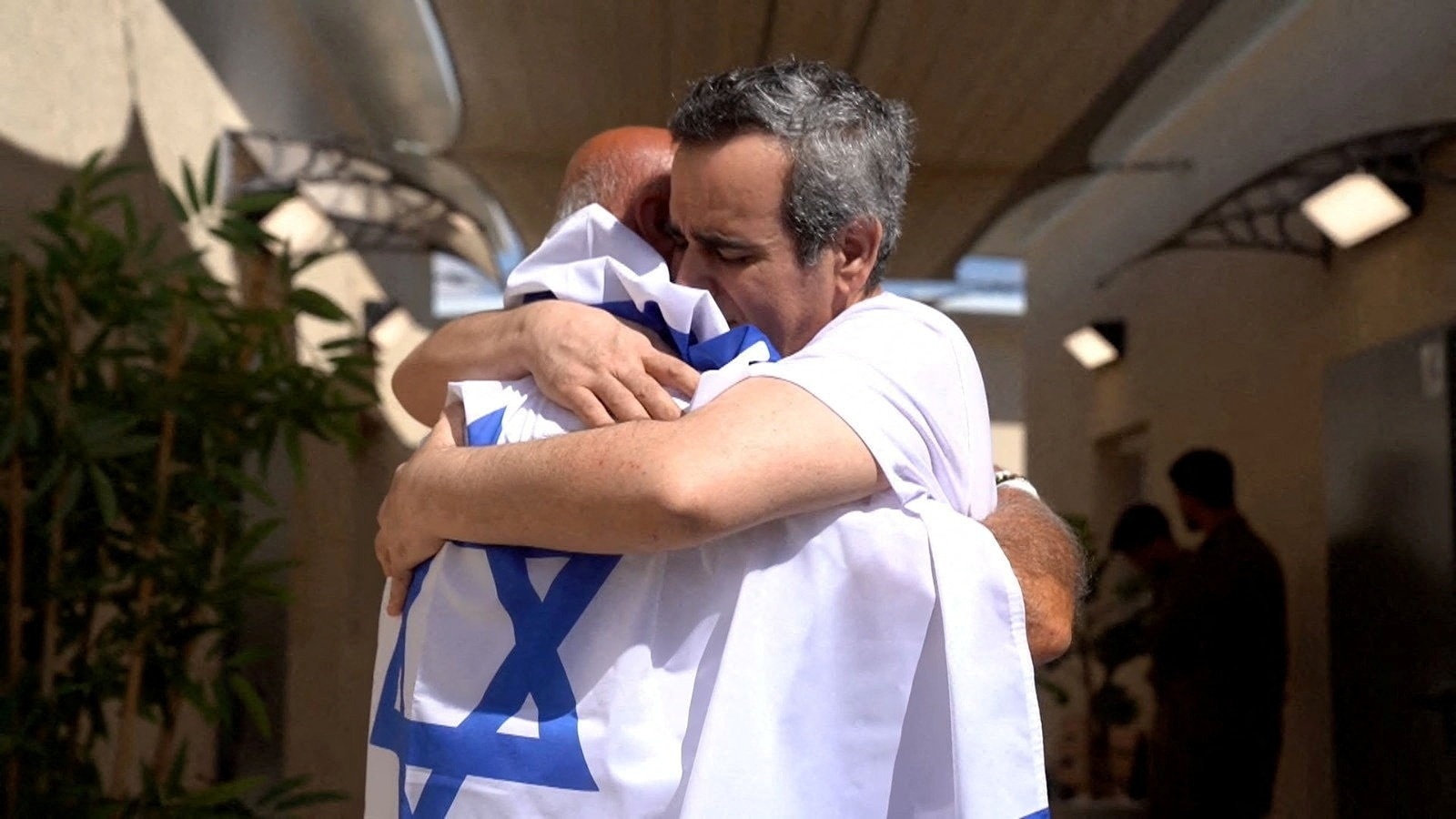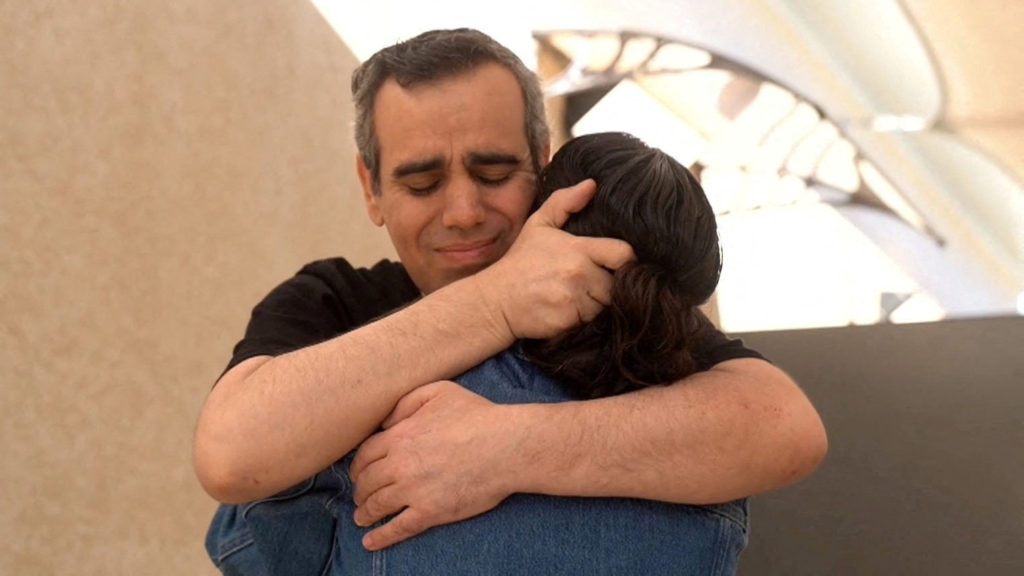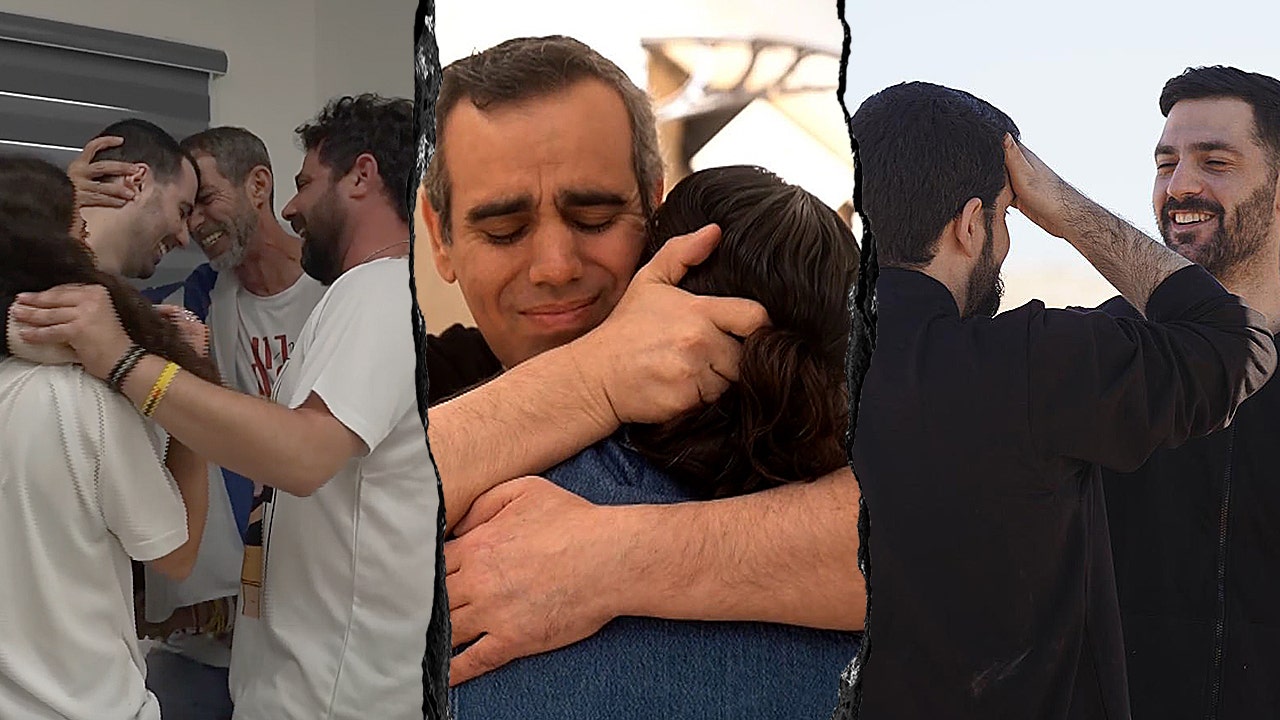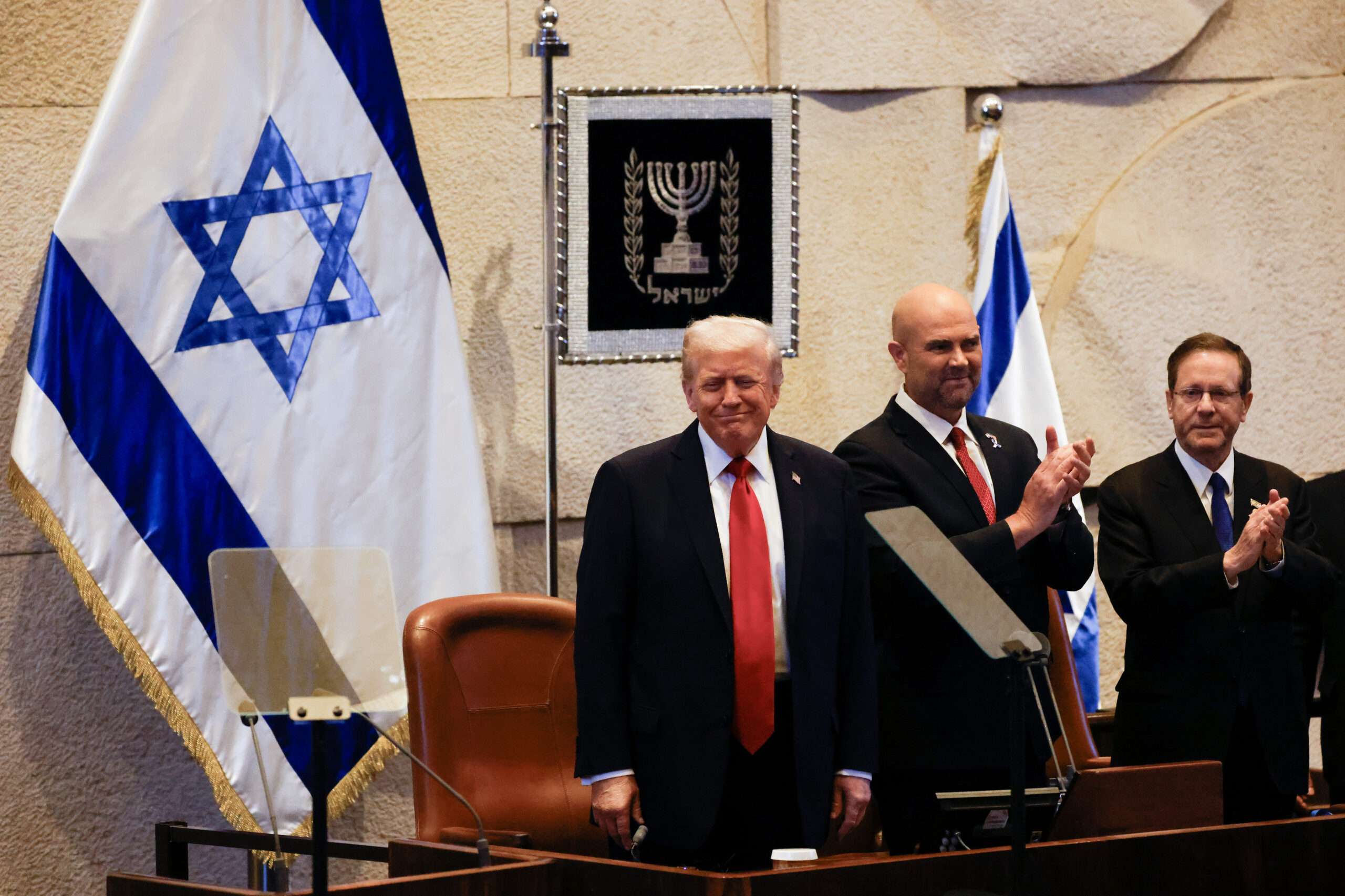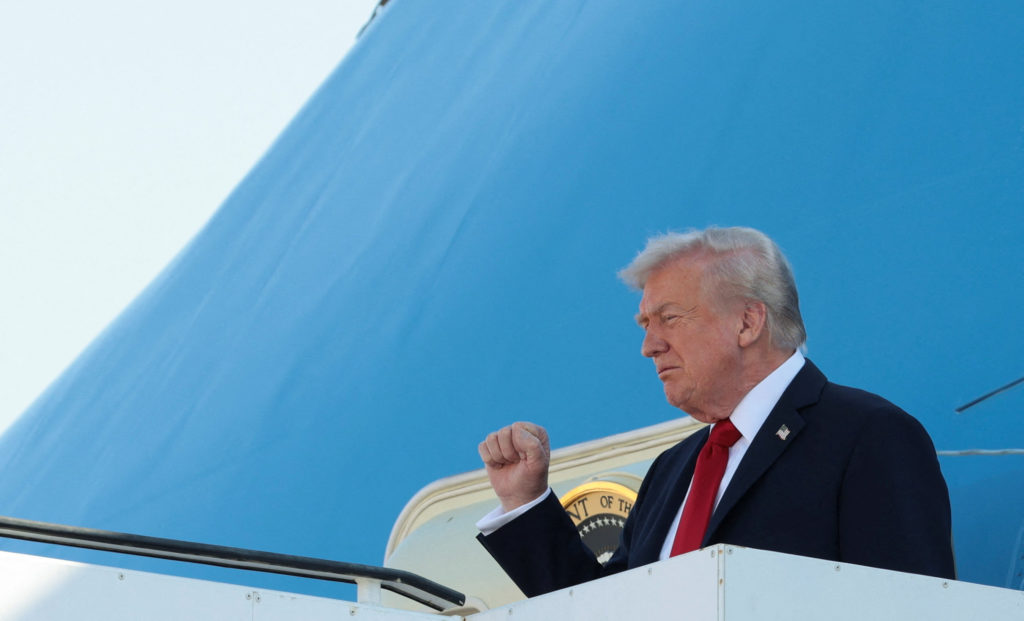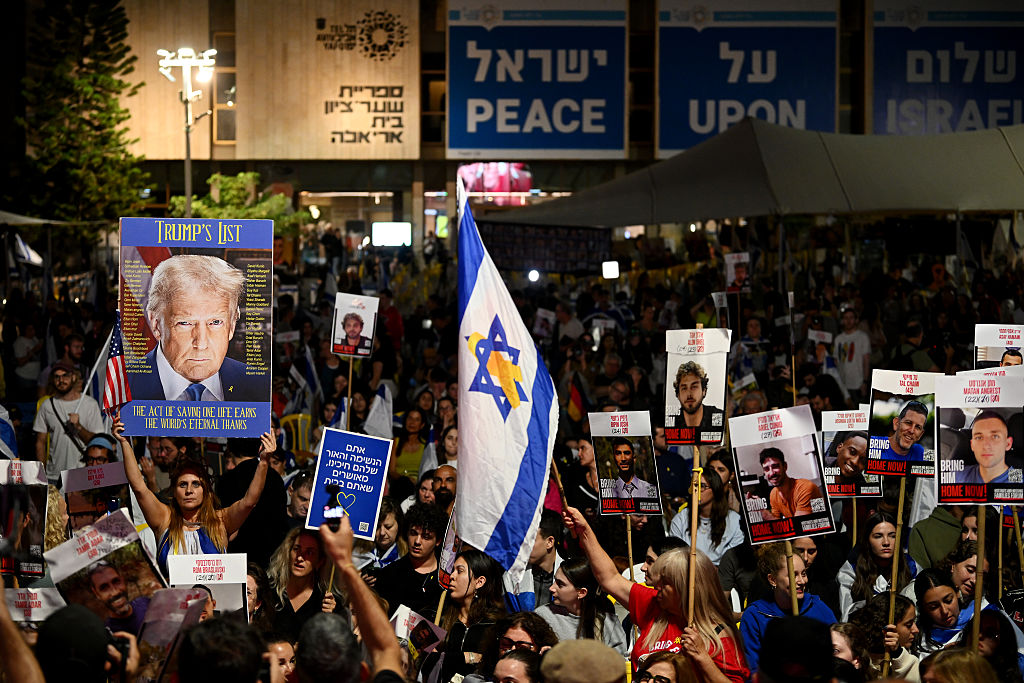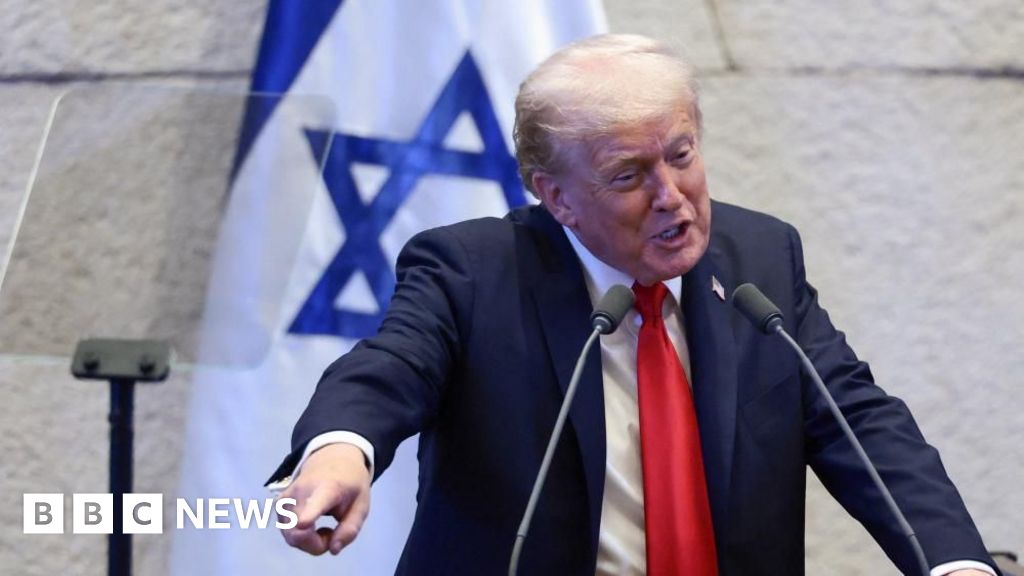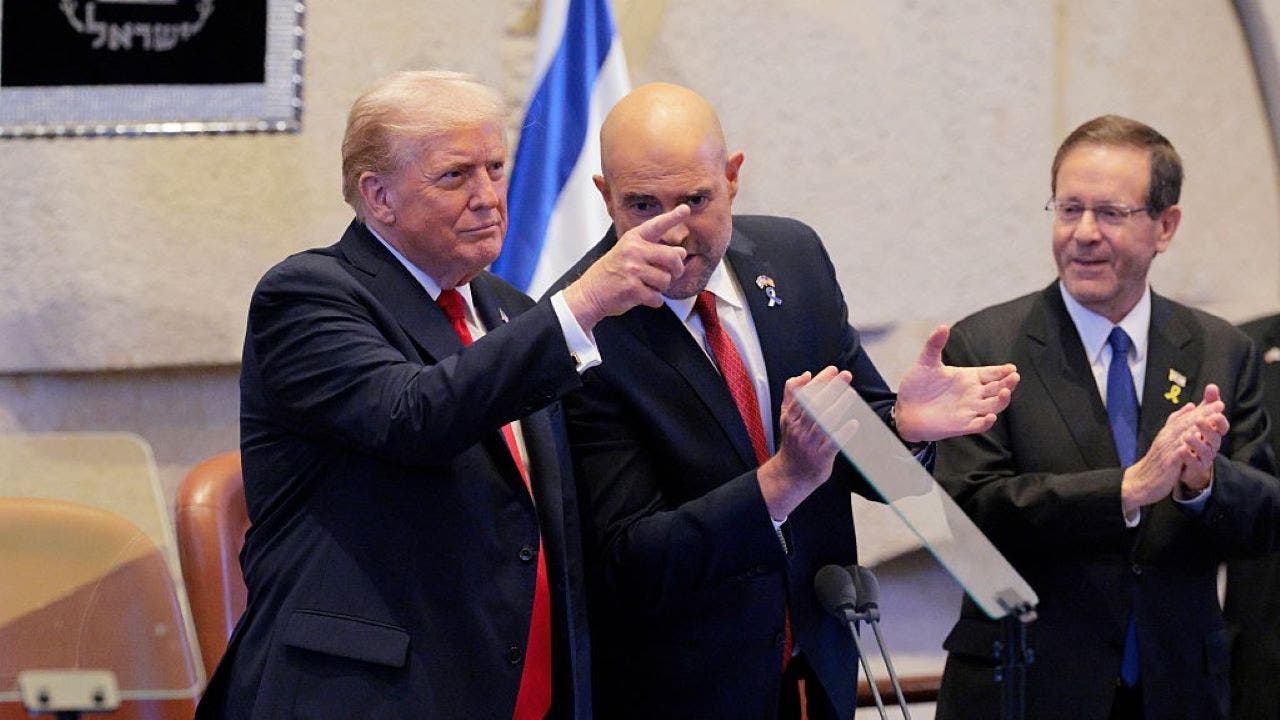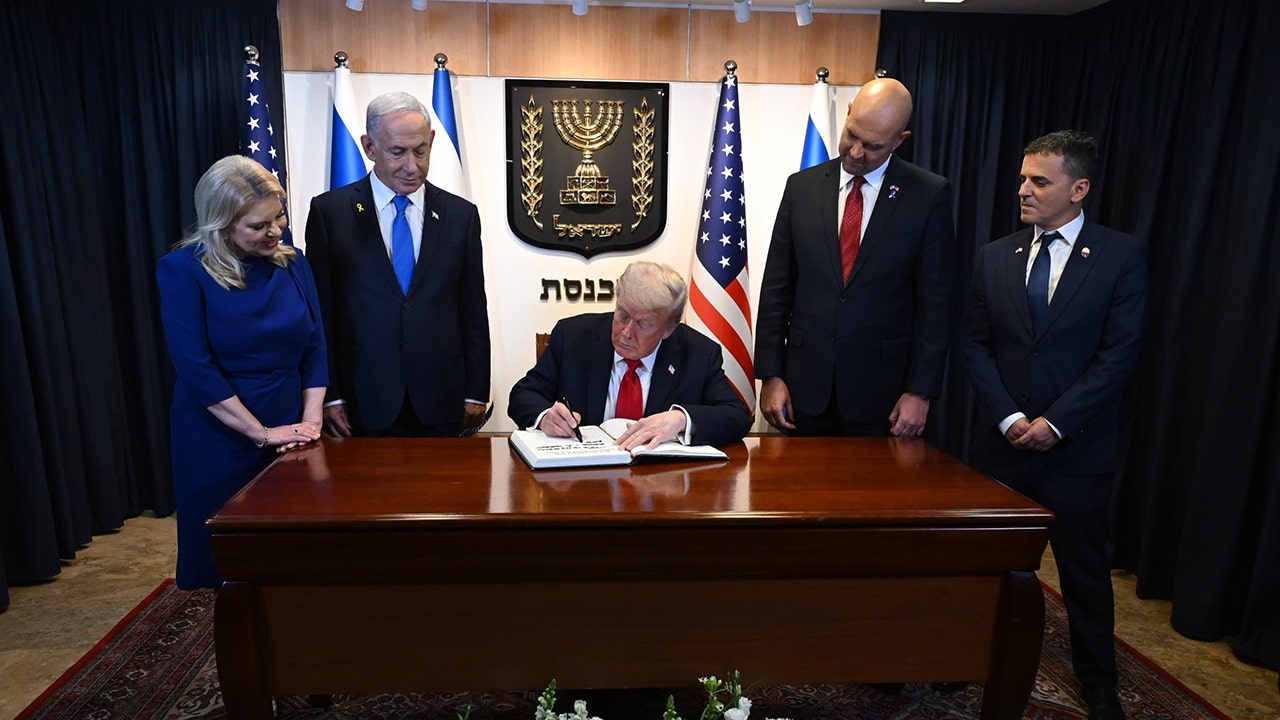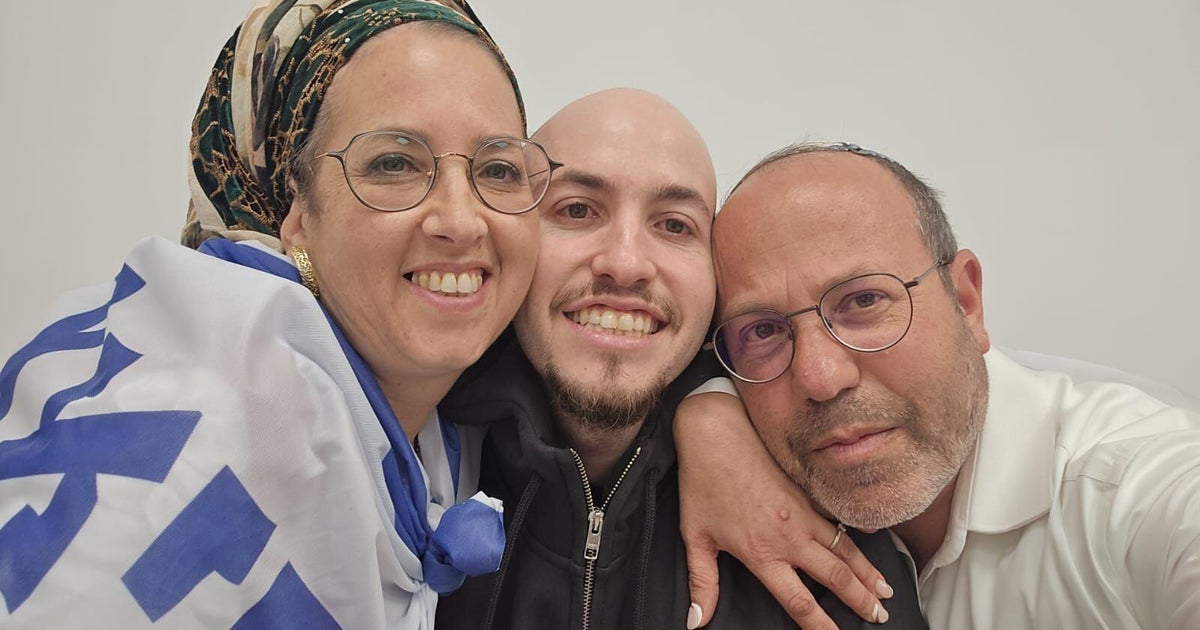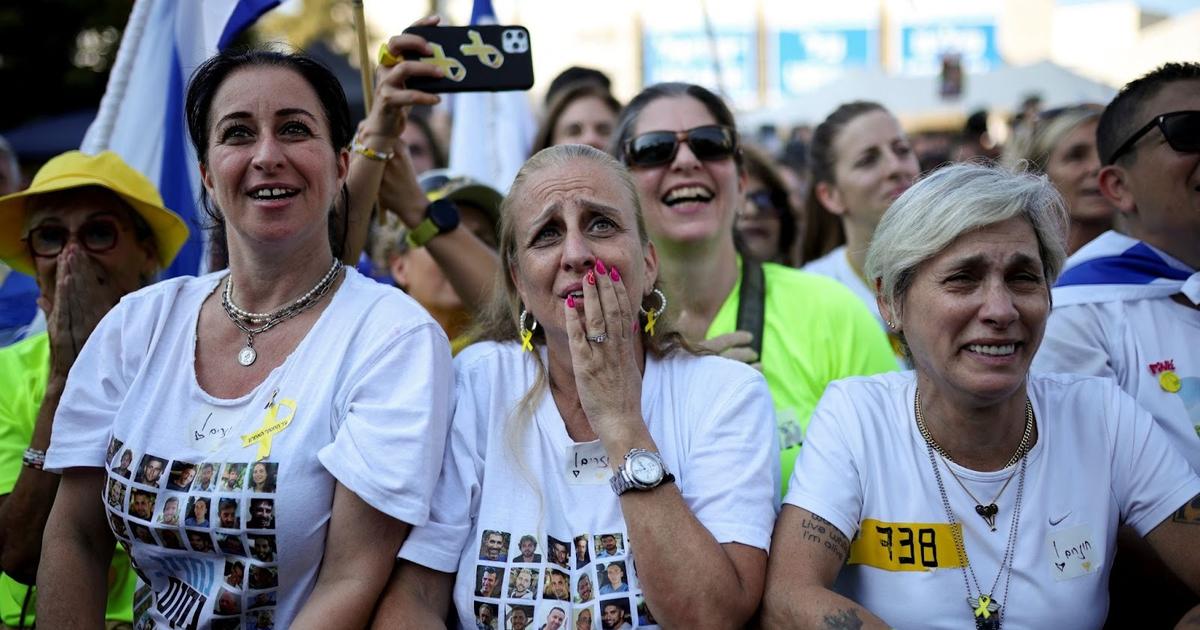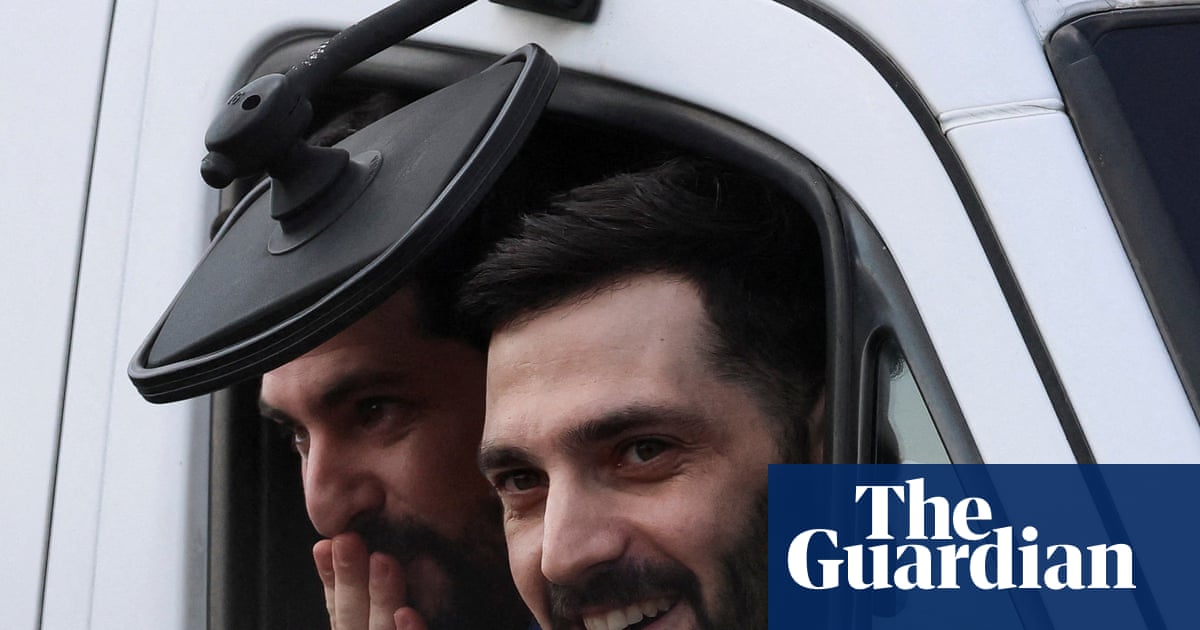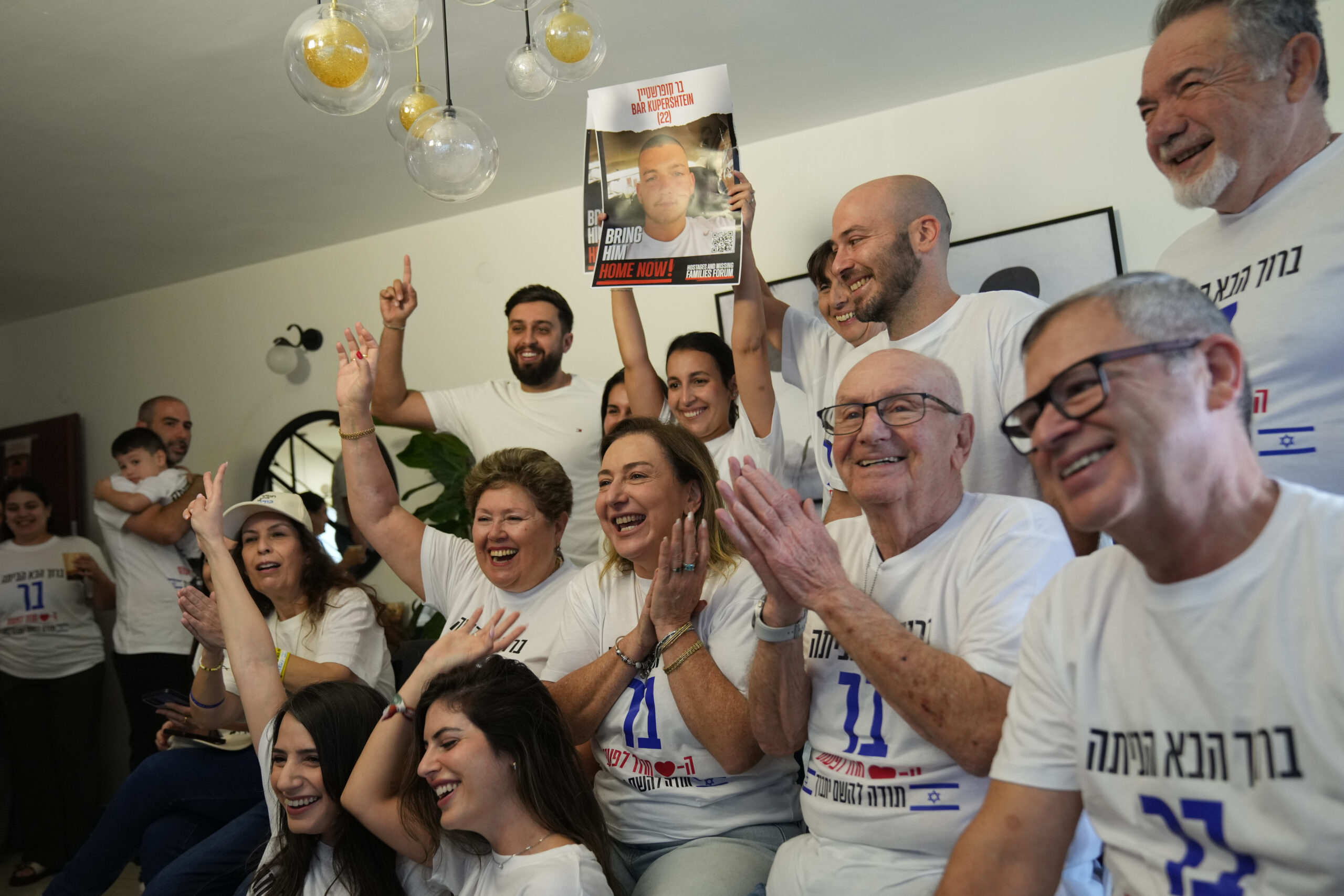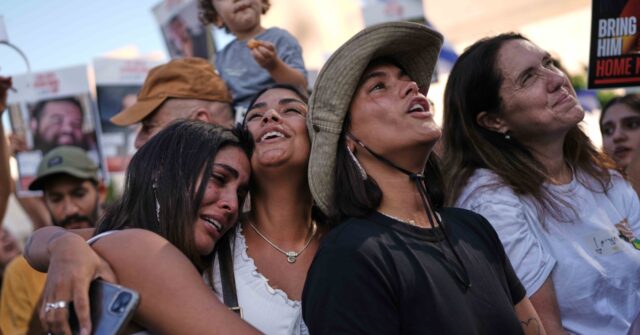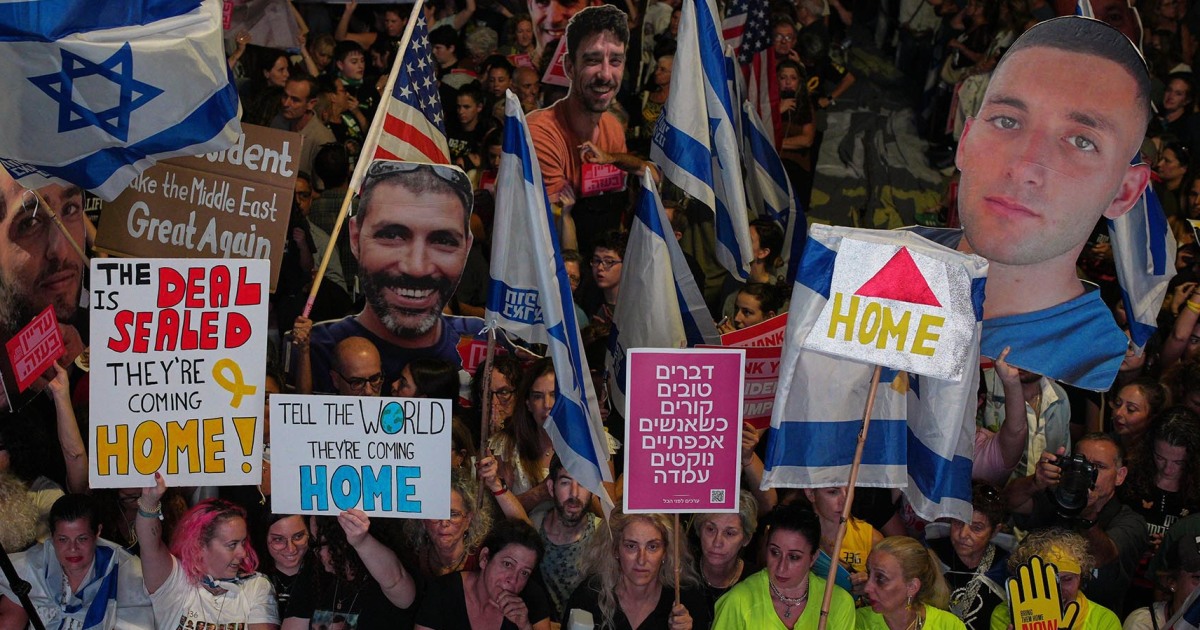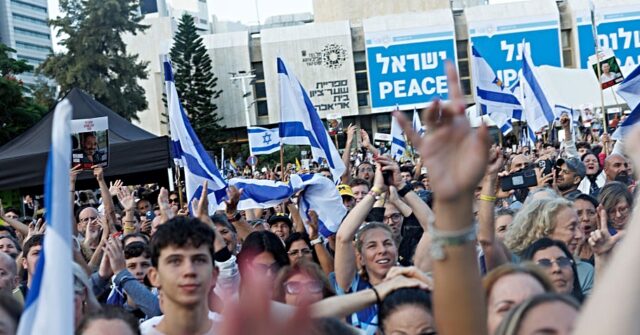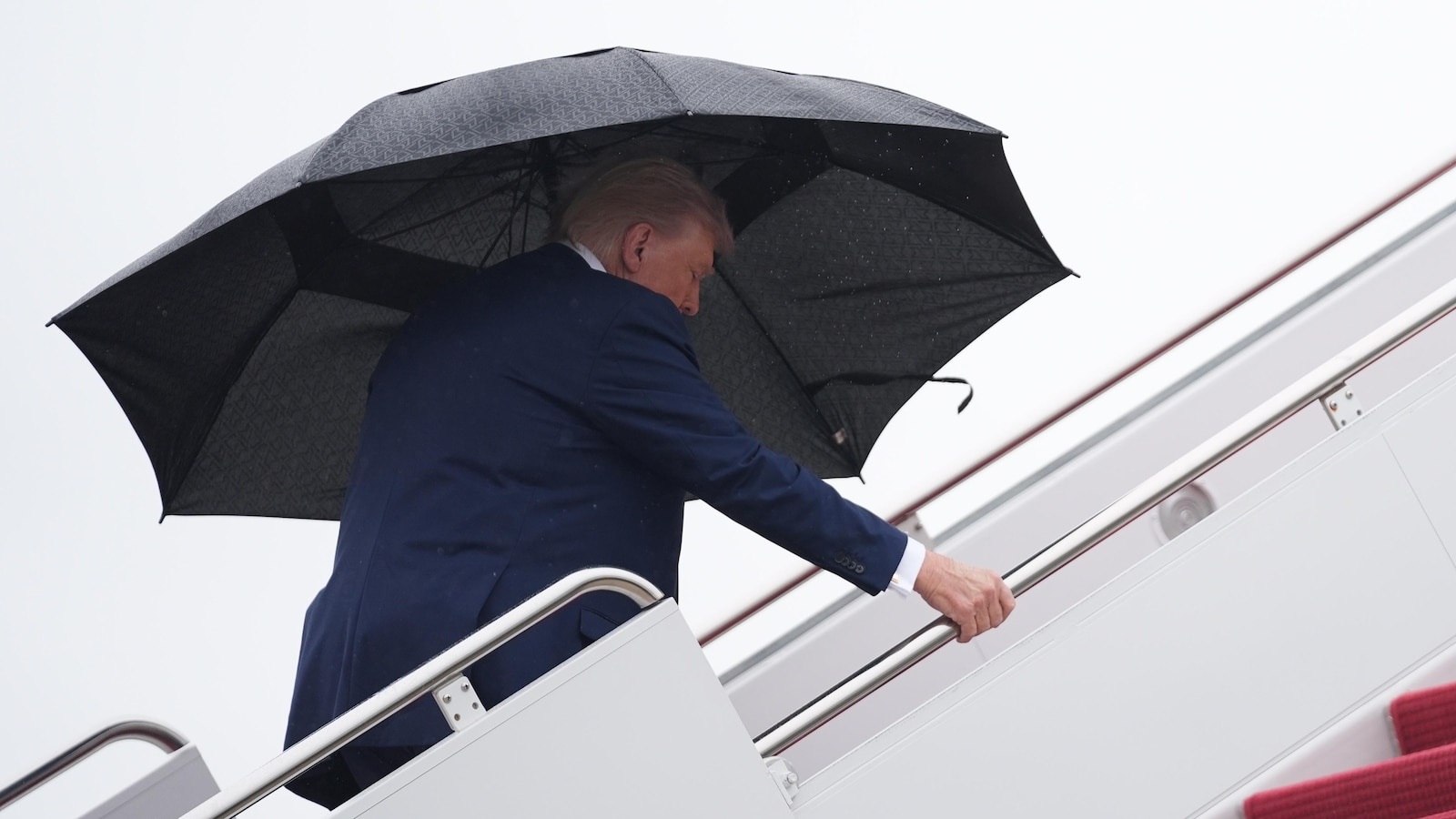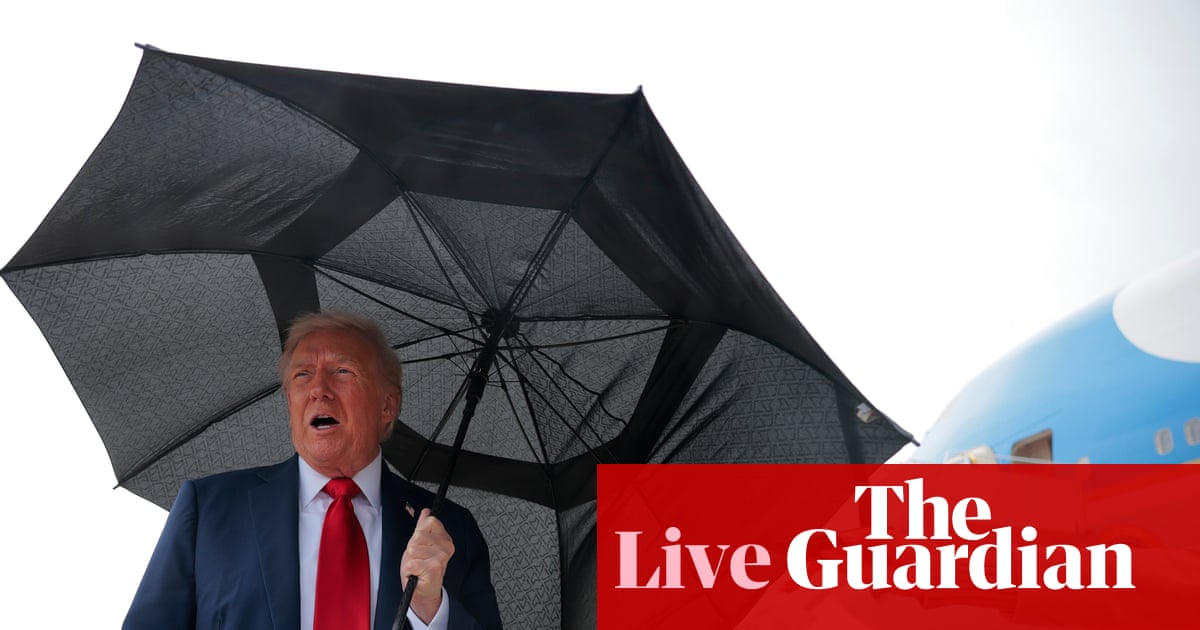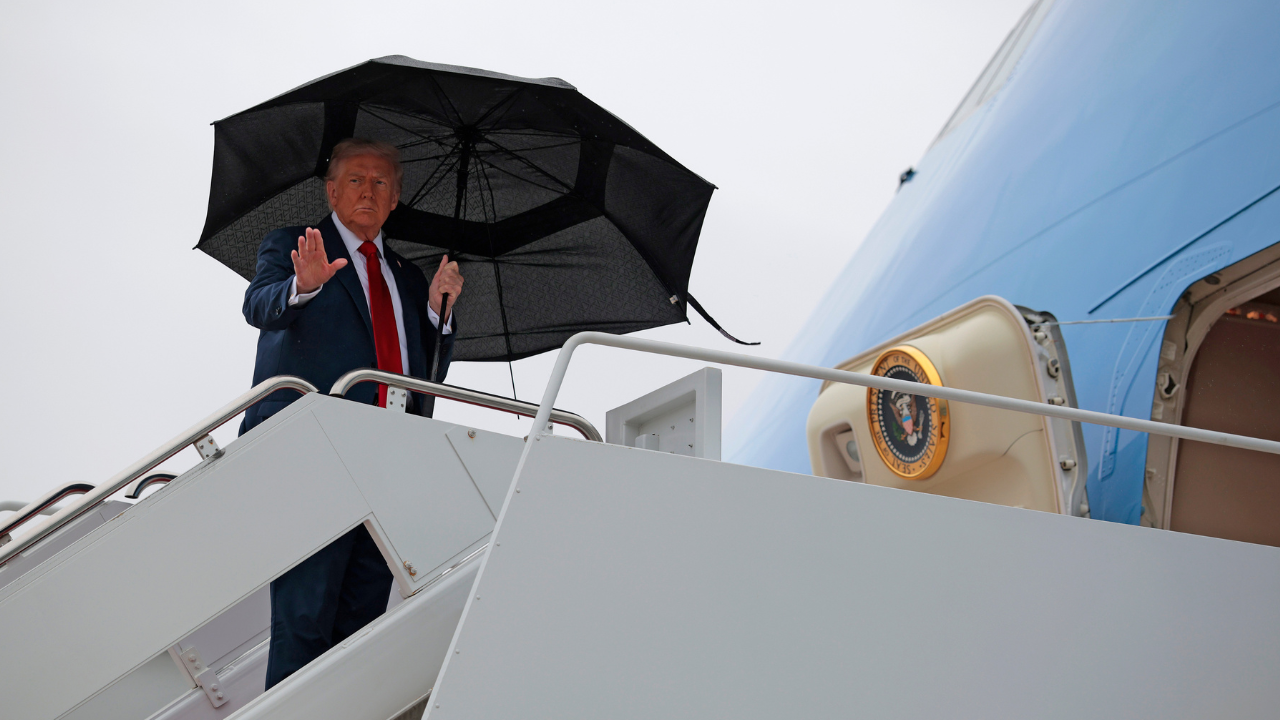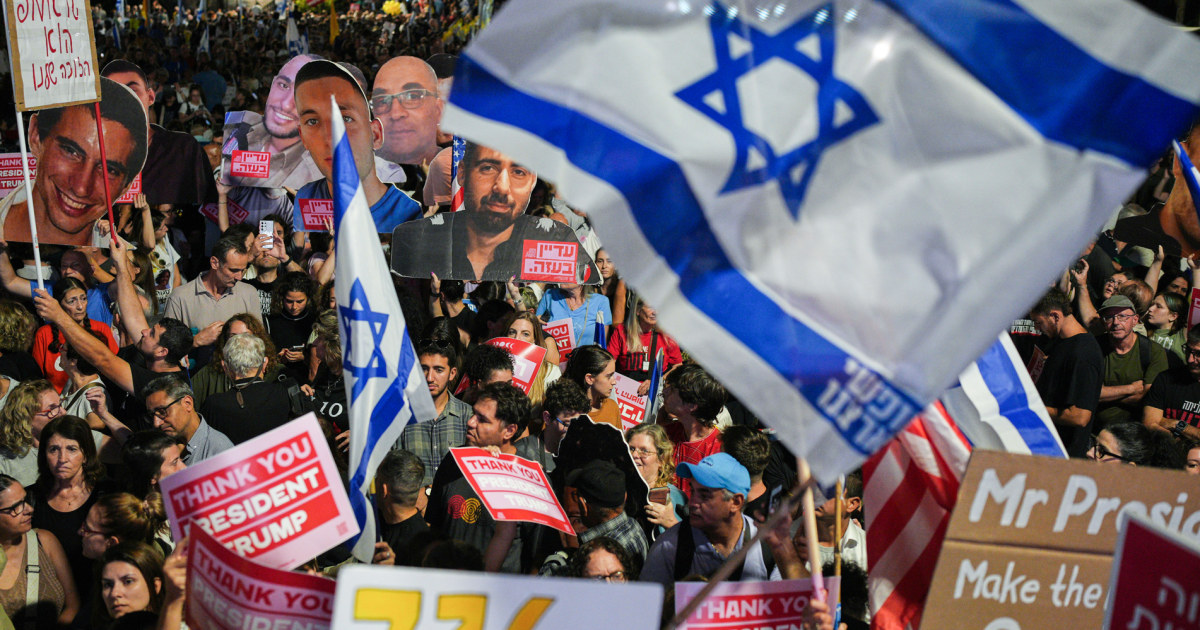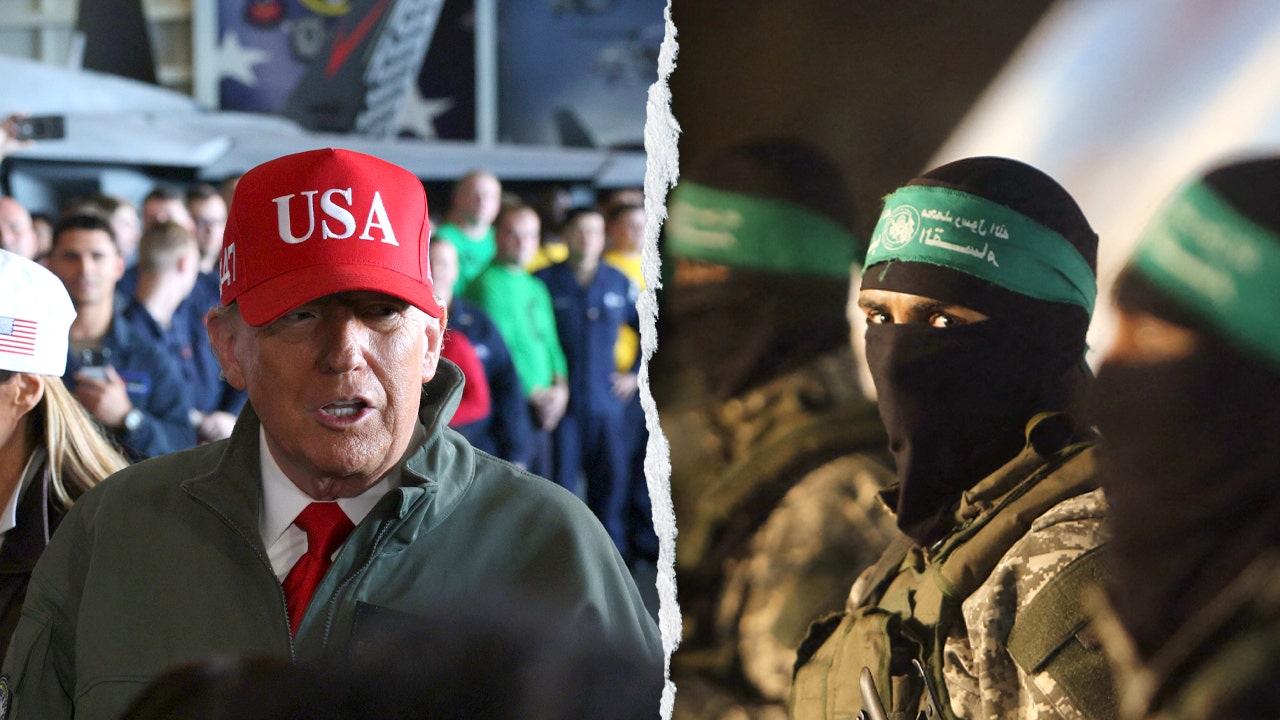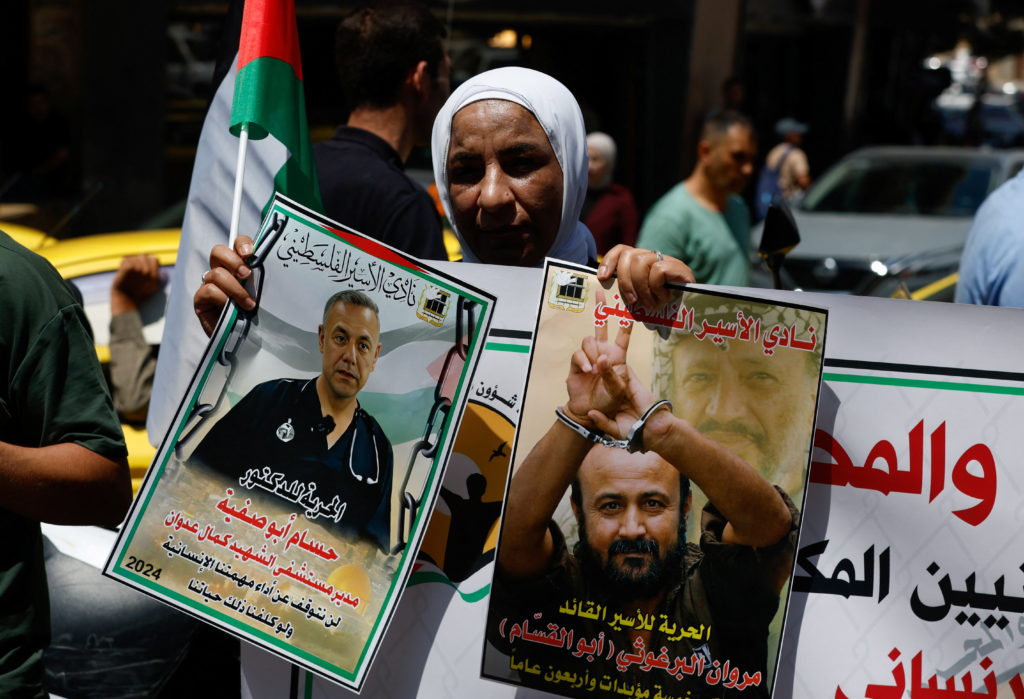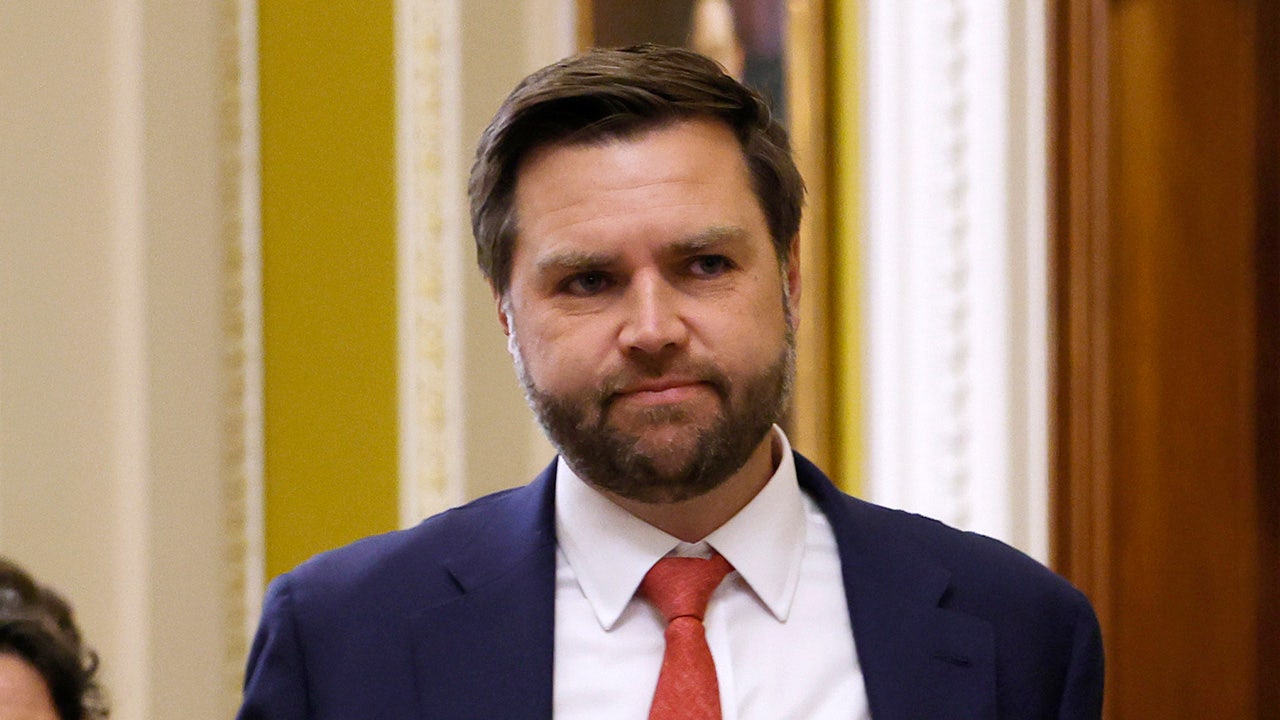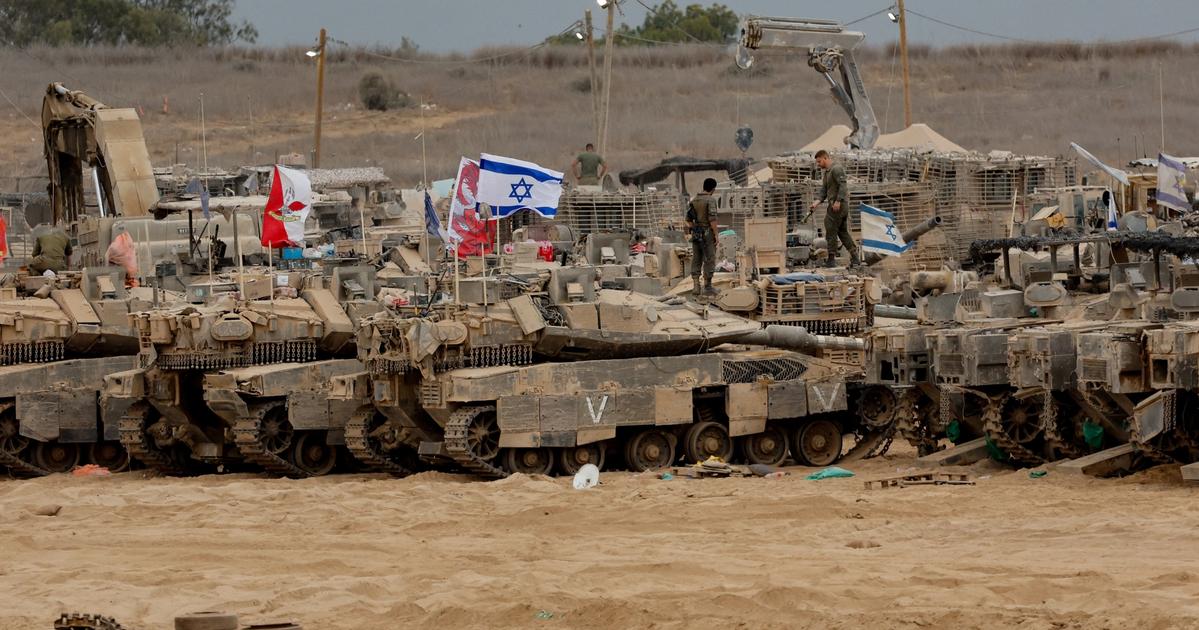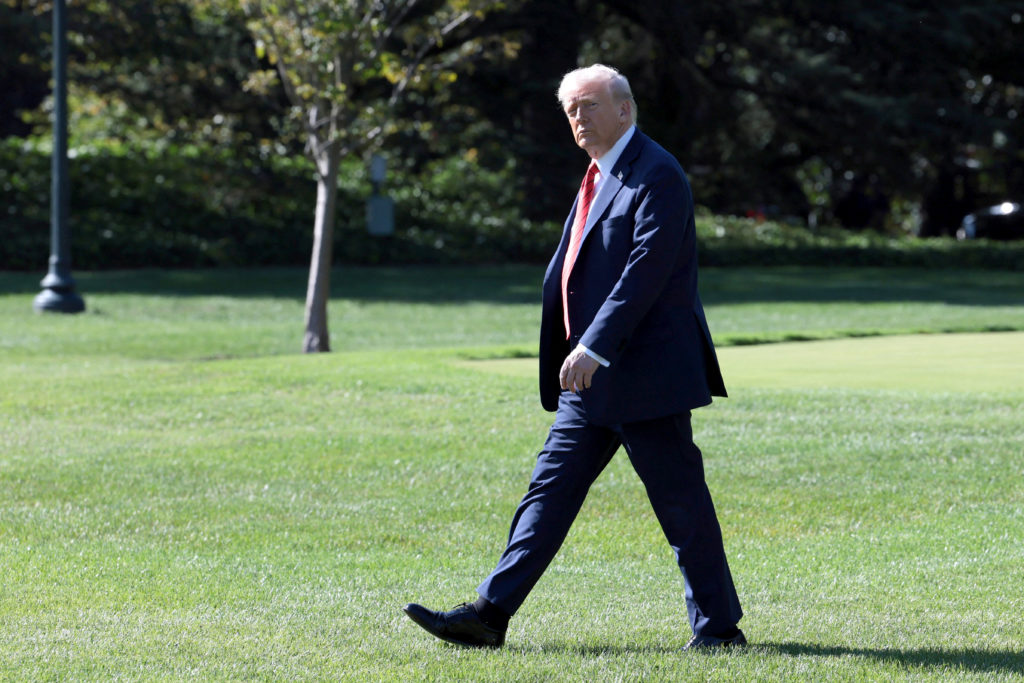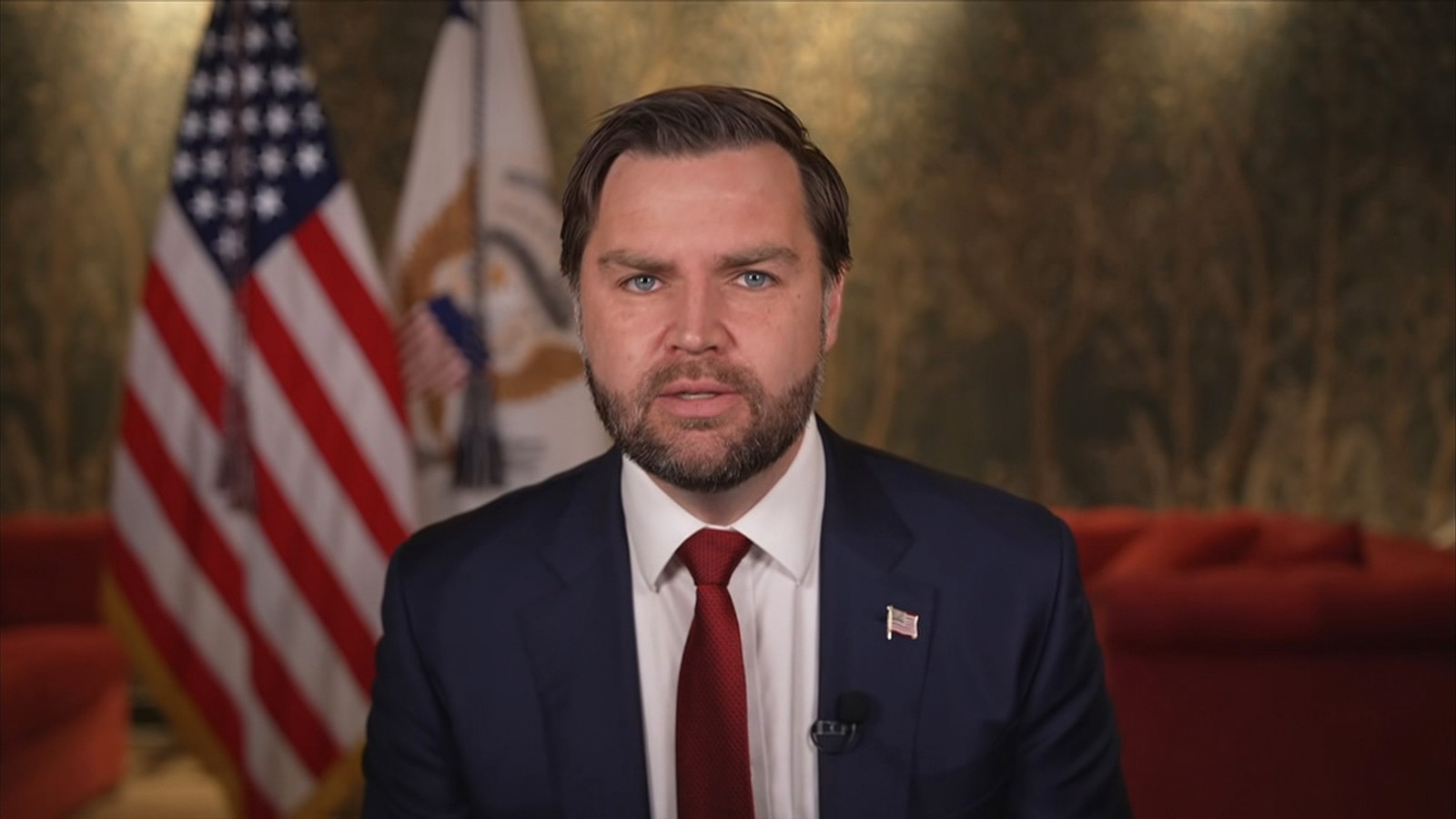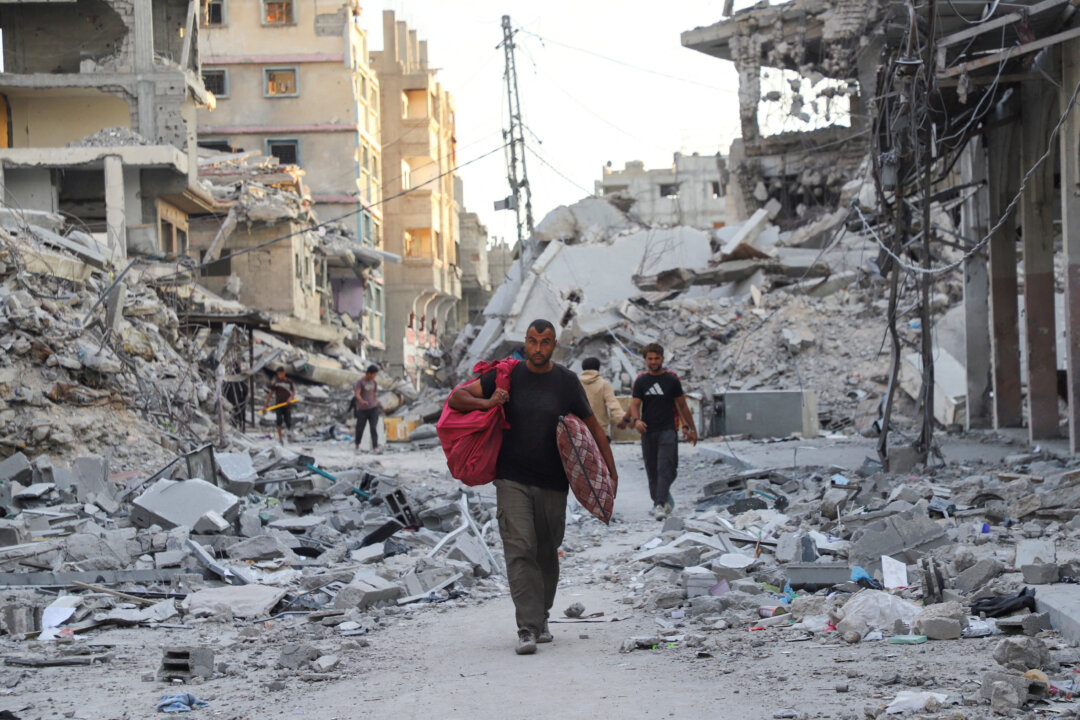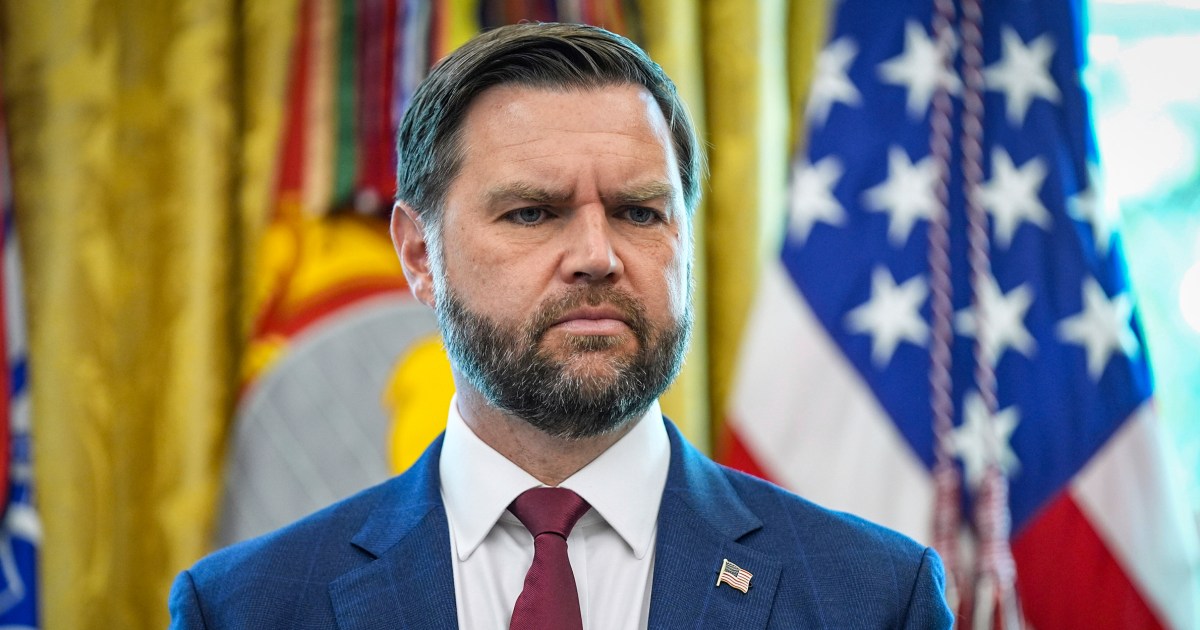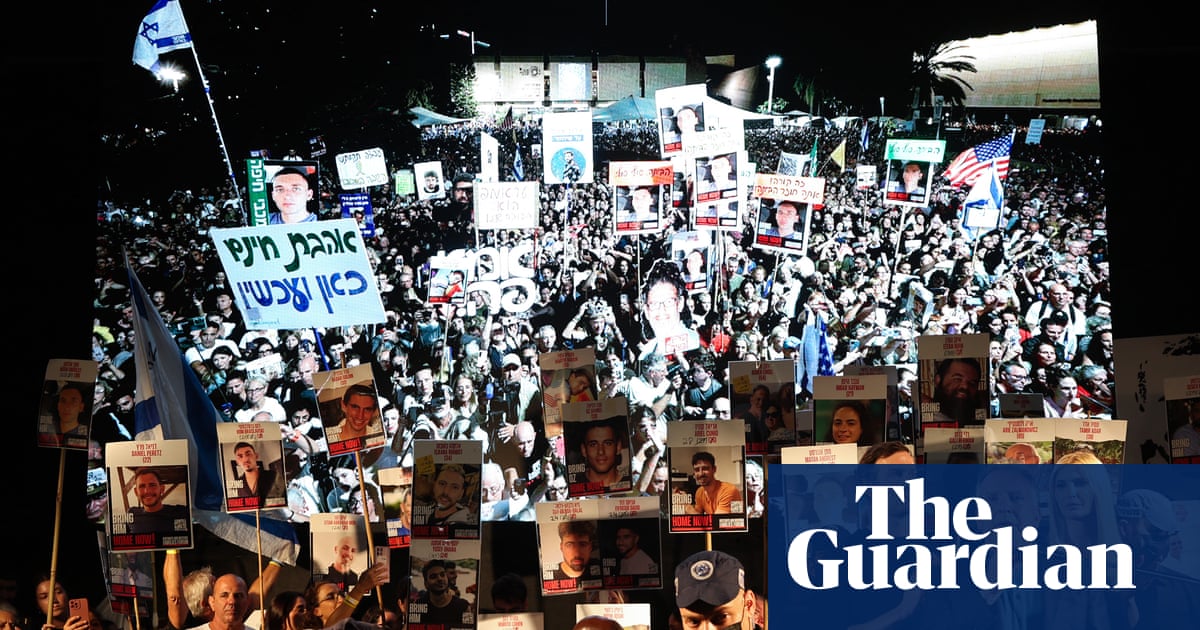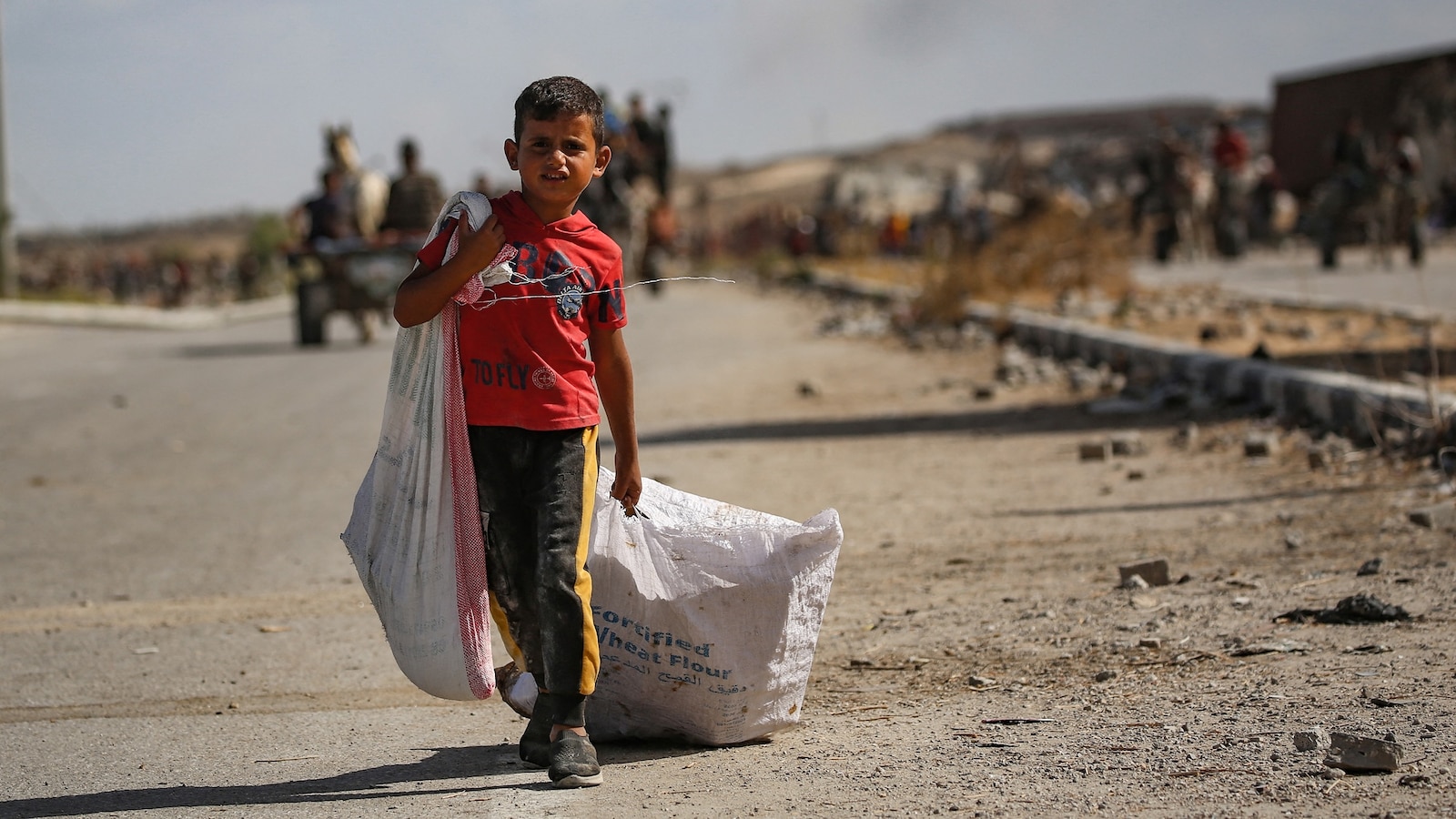Gaza Ceasefire Signed in Egypt as Hostage-Prisoner Exchange Concludes and Rebuilding Begins
World leaders, including President Trump, gathered in Egypt to sign a Gaza ceasefire deal, concluding a major hostage-prisoner exchange and initiating rebuilding efforts after two years of conflict.

Trump jets to Egypt for Gaza peace summit
World News Group

The Israelis Freed in the Gaza Hostage Deal
TIME Magazine

Israeli hostages, Palestinian prisoners freed during Gaza ceasefire
New York Daily News

Israel releases 1,900 Palestinian prisoners as part of peace plan
Washington Examiner

WATCH LIVE: Trump speaks at Israel-Hamas peace summit in Egypt
Washington Examiner

PHOTOS: Freed hostages reunite with their families
Washington Examiner

Israel lauds Trump during visit for living hostages' release
Washington Examiner
They're Home: All Living Hostages Return to Israel After Two Years in Hamas Captivity
Washington Free Beacon
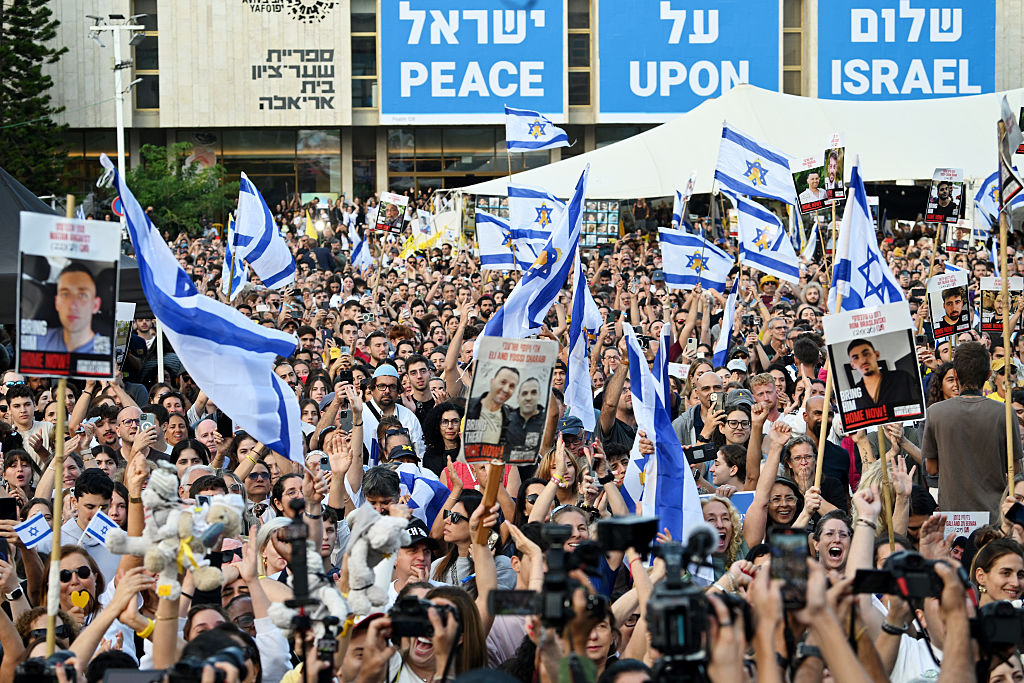
The return of the Israeli hostages goes beyond politics
The Spectator World

All living Israeli hostages officially freed from Hamas captivity
Washington Examiner

First of seven hostages freed and transported to Israel
Washington Examiner
World leaders throw their weight behind the Gaza ceasefire deal
Associated Press

Trump to greet freed Israeli hostages in Middle East visit: Vance
Washington Examiner
Overview
- World leaders, including President Trump and Mr. el-Sissi, convened in Egypt to sign a Gaza ceasefire deal, marking the end of two years of conflict sparked by the October 7, 2023 attack.
- Hamas released the final 20 Israeli hostages, held since October 7, 2023, reuniting them with their families as part of the U.S.-brokered ceasefire agreement.
- Israel reciprocated by releasing nearly 2,000 Palestinian prisoners, political prisoners, and detainees, including 250 long-term detainees and 1,700 Gazans, who were welcomed back in Gaza.
- President Trump announced the peace agreement, visiting Israel to meet hostage families and address the Knesset, while emphasizing the immediate start of Gaza's rebuilding efforts.
- Mr. el-Sissi awarded President Trump the Order of the Nile, Egypt's highest civilian honor, during the gathering of world leaders to formalize the Gaza peace deal.
Report issue

Read both sides in 5 minutes each day
Analysis
Left-leaning sources cover this story neutrally by providing comprehensive context that includes both diplomatic efforts and critical humanitarian and political realities. They report on Trump's peace initiatives while also detailing the dire situation in Gaza, Palestinian rights issues, and Israel's international standing, presenting a multifaceted view without overt editorial bias.
"There is no Palestinian ownership of this process."
"Monday evening’s symbolic signature ceremony marks a concrete start to the beginning of what promises to be a lasting peace, leaders hope, and the release of all remaining living Israeli hostages and nearly 2,000 Palestinian prisoners and detainees shows significant progress towards that goal."
"Scenes of relief and celebration unfolded across Israel on Monday as families embraced loved ones they had not seen in more than two years."
"Despite the brief euphoria, Israel violated ceasefires that coincided with those captive releases, arresting Palestinians across Gaza and the occupied territory wholesale, usually without charge."
"The moment of peace pauses a two-year-long war that has significantly damaged the Gaza Strip and killed tens of thousands of Palestinians."
"On Monday, Hamas released 20 hostages into the custody of the Red Cross, which then brought them to Israel as part of a new ceasefire deal that many hope will signal an end to two years of war in the devastated Gaza Strip."
"After more than 700 days in captivity, the remaining 20 hostages still alive in Gaza have been released, after the Israeli government’s ratification of a ceasefire deal with Hamas."
"Thousands of Israelis gathered in Hostages Square, Tel Aviv, on Monday to celebrate the release of the remaining living hostages."
"If Hamas insists on remaining in control of the areas above the Israel lines under Trump’s deal, then it will be Hamas that’s blocking reconstruction of those areas."
"The summit aims to “end the war” in Gaza and “usher in a new page of peace and regional stability” in line with U.S. President Donald Trump’s vision."
"The ceasefire offers a rare respite, diplomats and analysts alike warn that deep mistrust between Israel and Hamas could quickly unravel the deal, underscoring that a pause in fighting does not yet mean peace."
"Trump declared that the ceasefire agreement was not only an end to the war, but an end to the “age of terror and death” in the Middle East."
"Hundreds of Palestinians gathered in Khan Younis awaiting the return of loved ones as the Hamas-Israel prisoner exchange began."
"The exchange of hostages and prisoners raised hopes for ending the deadliest war ever between Israel and the group."
"Cheers broke out in Israel early on Monday, as television channels announced that the first lot of seven captives had been handed over to the International Committee of the Red Cross (ICRC)."
"All 20 remaining living Israeli hostages have been released by Hamas after more than two years in captivity in Gaza."
"Israeli officials have confirmed that all 20 living captives have been released in Gaza."
"Hamas handed over the last 13 living Israeli hostages to the Red Cross on Monday."
"Trump will address Israel’s parliament as Israeli captives in Gaza return home and around 2,000 Palestinian prisoners are freed from Israeli jails."
"Hamas must have no part of the future of Gaza or the future of the Palestinians."
"Cheering broke out among in Tel Aviv it was announced that Hamas had released seven Israeli captives into the custody of the Red Cross, the first to be released as part of the Gaza ceasefire deal."
"This marks a watershed moment in a conflict that has stretched for more than two years since the Oct. 7, 2023, massacre that triggered the bombardment, invasion and siege of Gaza."
"The truce and the exchange of both hostages and prisoners offered a glimmer of hope, but despite Trump’s optimism, the loss of life, devastation and trauma underscored how distant a lasting peace remains."
"People gathered in a square in Tel Aviv sobbed as photos of the hostages reuniting with their families flashed up on the large screens."
"The summit’s aim is “to end the war in the Gaza Strip, enhance efforts to achieve peace and stability in the Middle East and usher in a new era of regional security and stability”, according to Egypt’s presidency."
"Thousands of Palestinians continued to travel north towards Gaza City, the focus of Israeli attacks over the past two months, hopeful the ceasefire would bring an end to the war."
"Trump thinks there is a narrow window to reshape the Mideast and reset long-fraught relations between Israel and its Arab neighbors."
"The region prepared for President Trump to visit Israel and Egypt — the latest in the swift flurry of developments since the ceasefire was announced last week, offering hope for an end to the two-year war."
"Tens of thousands of Palestinians returned to areas of Gaza where Israeli forces had withdrawn on Sunday to find scenes of vast destruction and bodies hidden beneath the rubble."
"The pause in fighting allowed first responders to search previously inaccessible areas for bodies buried under rubble."
"The planned exchange comes three days after Israel’s government approved the first phase of a deal aimed at ending the war in Gaza."
"Trump is setting off for Israel and Egypt on Sunday to celebrate the U.S.-brokered ceasefire and hostage deal between Israel and Hamas and urge Middle East allies to seize the opportunity to build a durable peace in the volatile region."
"The hostage-detainee swap is the first step in Trump’s 20-point plan to end the war in Gaza."
Center-leaning sources cover this story neutrally, focusing on factual reporting of events and individuals involved. They present information directly, attribute statements clearly, and avoid loaded language or selective emphasis in their editorial choices. The coverage prioritizes conveying the details of the ceasefire signing and the human stories of the released hostages without pushing a particular narrative.
"As Gaza looks to rebuild, President Trump's peace plan doesn't address the West Bank or the creation of a Palestinian state, leaving the root of the conflict unresolved."
"The future governance of Gaza is unclear."
"The next phase of the Gaza peace plan brokered by President Trump moved forward significantly on Monday as Hamas released all of the 20 living Israeli hostages in exchange for hundreds of Palestinian prisoners and detainees, and as more aid started to flow into the Palestinian territory after two years of war."
"Trump touted the breakthrough as a turning point for the region."
"Under the agreement, all living hostages were to be released, as well as the bodies of the deceased."
"The final 20 remaining living hostages taken by Hamas on Oct. 7, 2023, were returned to Israel on Monday as part of an exchange for Palestinian prisoners held by Israel, officials said."
"The hostage and prisoner release is tied to the ongoing ceasefire, which began on Oct. 10, and remains the only current agreement between Israel and Hamas."
"More than two years after they were abducted during the terrorist attack that triggered the Israel-Hamas war, all living hostages have been returned to Israel from the Gaza Strip."
"The summit aims to “end the war” in Gaza and “usher in a new page of peace and regional stability” in line with U.S. President Donald Trump’s vision."
"the fact that so much progress was made over this critical initial 72-hour period—so much that Trump is before the Knesset declaring the war over—is huge for those who've been wishing for peace and stability for the region."
"Trump suggested the region was experiencing "the historic dawn of a new Middle East.""
"The exchange of hostages and prisoners raised hopes for ending the deadliest war ever between Israel and the militant group."
"The exchange of hostages and prisoners raised hopes for ending the deadliest war ever between Israel and the Hamas."
"Hamas has released 20 hostages held in Gaza after 738 days in captivity."
"All living hostages have now been freed and they are back in Israel, according to the military."
"News of the hostage release was met by scenes of jubilation in Tel Aviv, where huge numbers gathered for public screenings."
"The releases have powerful resonance on both sides."
"Heralded as an historic moment, the Gaza ceasefire accord also involves the release of nearly 2,000 Palestinians from Israeli jails."
"Trump thinks there is a narrow window to reshape the region and reset long-fraught relations between Israel and its Arab neighbors."
"The hostage handover ignited celebrations throughout Israel."
"The summit aims to “end the war" in Gaza and “usher in a new page of peace and regional stability" in line with U.S. President Donald Trump's vision."
"The summit aims to “end the war” in Gaza and “usher in a new page of peace and regional stability” in line with U.S. President Donald Trump’s vision."
"The exchange of hostages and prisoners marked a key step toward ending the deadliest war ever between Israel and the militant group."
"The remaining hostages are expected to be released on Monday, bringing hope to their families after more than two years of captivity."
"As climate change increases the frequency and intensity of heat waves, two counties in one of the fastest-warming parts of the United States offer a cautionary tale about what it takes to save lives in the face of the growing threat."
"This is a unique point in time where Muslims and Arabs are joining in the celebration of the ceasefire, along with Israel, marking a significant moment in the peace process."
"Anticipation built across Israel, the Gaza Strip and the West Bank on Sunday as the ceasefire between Israel and Hamas held before a critical day for all sides and the region."
"Anticipation built across Israel, the Gaza Strip and the West Bank on Sunday as the ceasefire between Israel and Hamas held before a critical day for all sides and the region."
"Thousands of Palestinians continued to travel north towards Gaza City, the focus of Israeli attacks over the past two months, hopeful the ceasefire would bring an end to the war."
"Coupled with relief and elation over the initial ceasefire is a deeper anxiety over Gaza’s future."
"Trump thinks there is a narrow window to reshape the Mideast and reset long-fraught relations between Israel and its Arab neighbors."
"It's really a great moment for the world, too, which is why the president's going to go over there and celebrate with these hostages."
"The vice president stressed that “you can’t say exactly the moment they will be released, but we have every expectation — that’s why the president is going — that he will be greeting the hostages early next week.”"
"The amount of aid entering the Gaza Strip is expected to increase Sunday to around 600 trucks per day, as stipulated in the agreement."
"Egypt will host talks with Hamas and Israeli representatives in the Red Sea city of Sharm el-Sheikh on Monday."
Right-leaning sources collectively frame this story by emphasizing Donald Trump's pivotal role as the "Peace President" and "victor" in brokering the hostage release deal. They highlight the emotional reunions of Israeli hostages while portraying Palestinian prisoners as "convicted terrorists." The narrative focuses on Israeli joy and concerns about Hamas's adherence to the agreement, creating a clear pro-Israel, pro-Trump perspective.
"Now the rebuilding begins, the president said and later added that several countries have already stepped forward to help in financing the process."
"Humanitarian aid is now pouring in, hundreds of trucks with food, medical equipment, and supplies, Trump said."
"Outrage erupted over the failure of Hamas to return the bodies of all those who died since they were taken after the Oct. 7, 2023, massacre of Israeli civilians by Hamas terrorists."
"Droves of Palestinian prisoners boarded buses on their way to the West Bank and the Gaza Strip."
"The goal of the summit between over 20 world leaders is to bring an end to the war in the Gaza Strip."
"Following Hamas' release of all 20 remaining living hostages held in Gaza on Monday, pictures and videos are pouring in of their families' reunifications."
"The rebuilding is maybe going to be the easiest part."
"People in the streets cheered as a live stream of the hostages’ return was carried in Tel Aviv’s Hostages Square."
"As Trump flew over Israel, he was greeted with a large beach banner that could be seen from above."
"Israeli Prime Minister Benjamin Netanyahu described Trump as the “greatest friend the state of Israel has ever had in the White House.”"
"Trump described the ceasefire with Hamas as a very exciting time for Israel and for the entire Middle East."
"Trump hailed a "new beginning" for the Middle East ahead of his address to the Israeli parliament, as Hamas released all 20 living Israeli hostages from captivity in Gaza."
"The release of the hostages marks a triumphant moment for Israel and is celebrated as a significant step towards peace in the region."
"Today, for a moment, there is light. Relief, reunion, joy, and yes – grief."
"The remaining 13 living hostages that were held captive by Hamas for more than two years have been released and are now reportedly safe with Israel Defense Force troops in Gaza."
"The former hostages are all set to be checked out in a military hospital in Israel."
"It was, already, one of the happiest days in Israel’s history."
"The plan received high praise and approval from Arab states in the region, in addition to other countries."
"The commanders and soldiers of the IDF salute and embrace the returning hostages as they make their way home to the State of Israel."
"The hostages' release marks the end of a 24-month nightmare for the people of Israel."
"Israelis are rejoicing at Hostage Square in Tel Aviv following confirmation that Hamas had released 20 living Israeli hostages to the Red Cross."
"The historic peace deal between Israel and Hamas is expected to end the two-year war in Gaza and bring home the remaining hostages."
"The release of the 48 remaining Israeli hostages held in Gaza is expected Monday morning before their transfer to the Red Cross."
"The peace agreement, brokered by President Trump, sparked celebrations across a region plagued by violence since the Hamas terror attacks on Israel on Oct. 7, 2023."
"Trump made the remark aboard Air Force One, as the president and key members of his administration are on their way to Israel."
"The handover marks 737 days since Hamas seized the hostages during its Oct. 7, 2023 attack on Israel."
"Israel said Sunday that it expected all living hostages held in Gaza to be released Monday in its breakthrough ceasefire deal with Hamas, as Palestinians awaited the release of hundreds of prisoners held in Israel and a surge of aid into the famine-stricken territory."
"While rescuing living hostages remains the Trump administration’s top priority, returning the remains of those killed is also an important effort to give families closure."
"The administration diverged from the 'traditional, failed diplomatic roots' to help mediate an agreement."
"The Israel–Hamas cease-fire brokered by President Donald Trump held for a third day on Oct. 12, offering hope for a more lasting peace years after the Oct. 7, 2023, attack."
Articles (98)
Center (35)
FAQ
The ceasefire agreement was structured into three stages, each lasting 42 days. It included the release of Israeli captives by Hamas, the release of Palestinian prisoners by Israel, and the return of calm to the Gaza Strip. Additionally, Israel agreed to allow substantial humanitarian aid into Gaza and gradually withdraw from parts of the Gaza Strip.
The January 2025 agreement focused on stages of prisoner exchanges and humanitarian aid, while the more recent deal emphasizes a broader ceasefire and rebuilding efforts following a U.S.-brokered agreement. The latter included a major hostage-prisoner exchange and official international recognition with world leaders.
International leaders, including President Trump and Mr. el-Sissi, played a significant role by convening in Egypt to formalize the ceasefire and initiate rebuilding efforts. President Trump also visited Israel to meet with families of hostages and announced the start of Gaza's rebuilding efforts.
The conflict led to significant humanitarian needs in Gaza, including the need for substantial aid. The recent agreement addresses these needs by allowing for the entry of humanitarian supplies and initiating rebuilding efforts.
History
- 2M

 15 articles
15 articles
- 2M

 16 articles
16 articles
- 2M

 24 articles
24 articles
- 2M

 7 articles
7 articles
- 2M

 9 articles
9 articles
- 2M

 6 articles
6 articles
- 2M

 5 articles
5 articles
